Three weeks later and we were back again, to begin again, this time from Ayot St Lawrence instead of Wheathampstead. It was early October and the wasps were still browsing drowsy on the ivy.
We made a close circuit around the ancient oak trees growing in the sheep pasture before the Palladian folly of St Lawrence’s Church, built in imitation of a Greek temple and standing remote and aloof from the rest of the village.
We skirted around in the shadow of the church’s stern and forbidding portico, where I preferred the view in the opposite direction, over the gravestones back down to where we’d started from.
We continued past the huge sycamore we’d first encountered on our previous visit, then around an anonymous and diversionary bypass path.
To the secret hidden heart of the village, a network of lines that enlace and intersect, in an exciting map of potential and possibility at Shaw’s Corner.
And so we arrived again at the path we walked last time we were here.
Where hazel sticks spell out their own tale of passers-by and wayfaring strangers, keeping a measured distance, until an exception proves the rule.
Last time here we went straight on, this time round we branched to the left.
A window
A corridor
Stocking Springs is a narrow strip of protected ancient woodland
with a narrow winding path threaded through the middle of it.
It is home to a large family of coppiced hornbeams.
It feels like a tiny sunlit slice of Epping Forest.
At Stocking Springs Wood gnarled and twisted trees throw a dense shade in some areas, while in others regularly coppiced trees can be seen and here the light can get to the ground, encouraging many beautiful wildflowers; in spring the woodland floor is a carpet of bluebells and wild daffodils. Other plants such as wood anemones, wood violets and yellow archangel indicate that this is an ancient woodland. Among the coppiced hornbeam there are tall oak standards and these provide nesting sites for birds such as the nuthatch, great spotted woodpecker and treecreeper, among many others.
Last time we’d climbed to the horizon,
this time we kept to the forest floor.
Dowdell’s Wood, Fish Wood, Warren Wood, Bladder Wood.
To Hunter’s Bridge, then up the embankment to the dismantled railway that previously we’d only crossed over, but which now we walked along.
This is the Ayot Greenway.
And here, where there once was a railway, we branched off into a siding…
along an old hollow track to the high hedges of Ayot St Peter.
On the map it looks like a village but on foot it’s all hidden away behind hedges of hazel and holly, all masked and quarantined and Covid secure.
The only place open is the cemetery.
There were ghosts and an old straight track, back to where we started from.
Head down, straight on,
walking a raga, singing the blues,
moving in rhythm, passing the time.
Footstep is to heartbeat as eyesight is to landskip.
Country dancing a musical songline all along a sidelong horizon.
There’s birdsong around the field pond and echoes in the sky.
Walking is a melody.
We’d been gradually climbing a gentle incline. This was the summit.
From here on it was all downhill.
Through the eye of the hedge.
Back to the Brocket Arms again.
The pub marked the end of our walk, we’d completed the circuit and our car was parked just along the road by the phone box. But the map suggested another small circuit around Ayot Park. I was intrigued by the simple designation of “Oak” along the northern edge. Why single out one tree on the map? It hinted at something special, maybe an ancient historic tree.
Along the way we found this beauty, two trees growing together as one.
Twogetherness
By the garden gate of the Manor House there’s a nice help yourself display of chard and kale plants and a great heap of spectacular quinces, all laid out on a Cath Kidston oil cloth. She’s come a long way since the Rowley Gallery!
And a clattering of jackdaws above us.
Most of the trees here are ash, with some occasional oaks but not enough to call this an oak wood. It would be better if the word on the map was “Ash”.
There’s lots of ash.
But where the map says “Oak” I can see only deadwood.
Oak in the field but not in the wood.
Sheep on the bench but not in the pen.
※



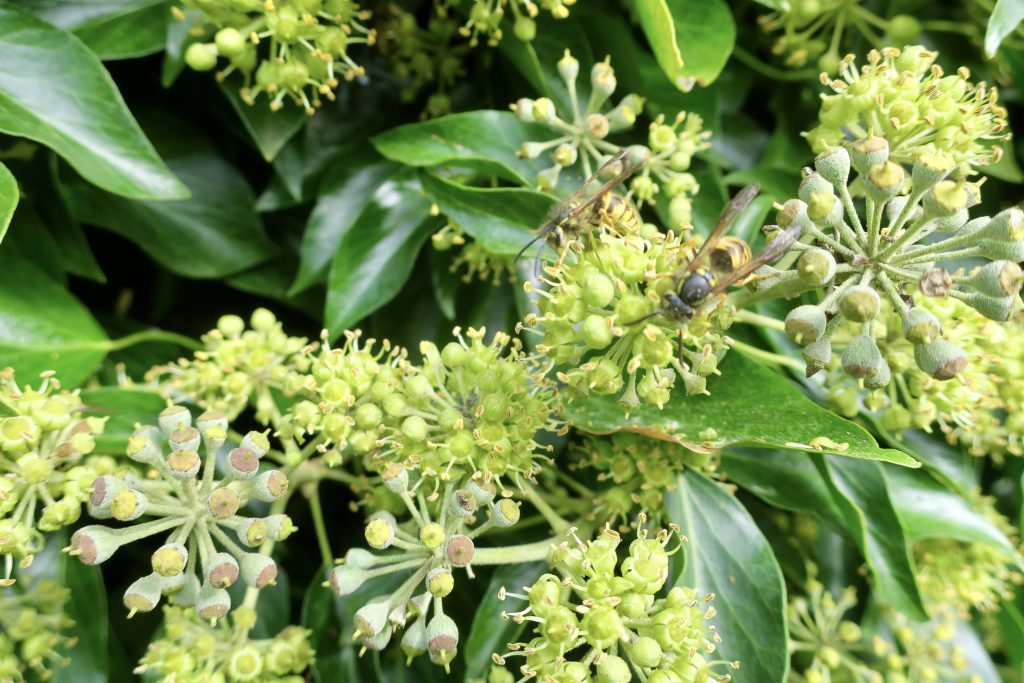
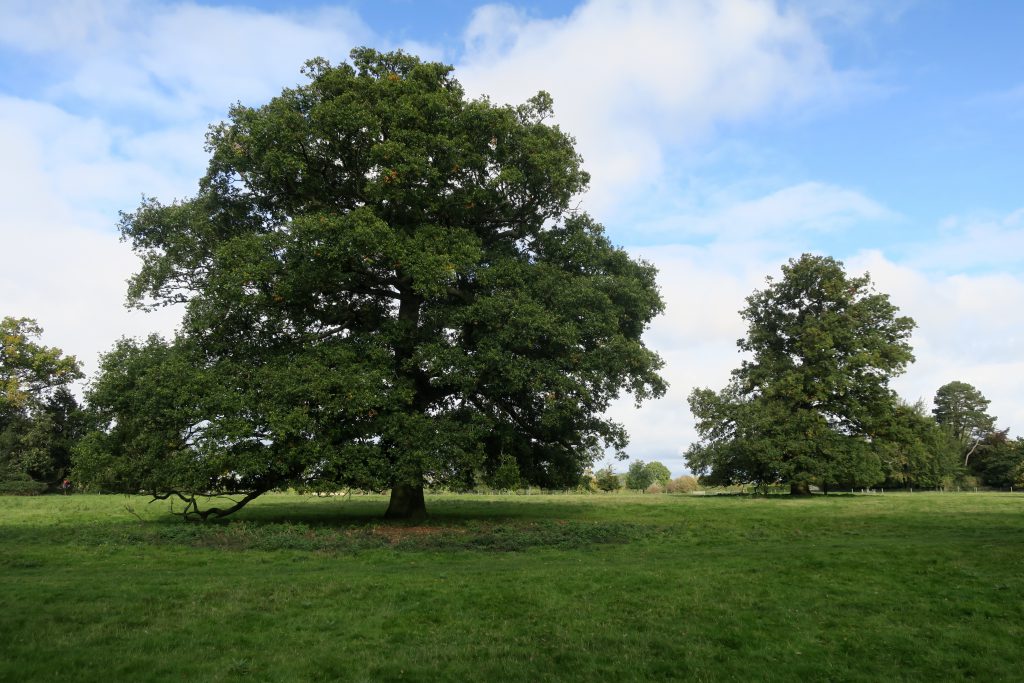
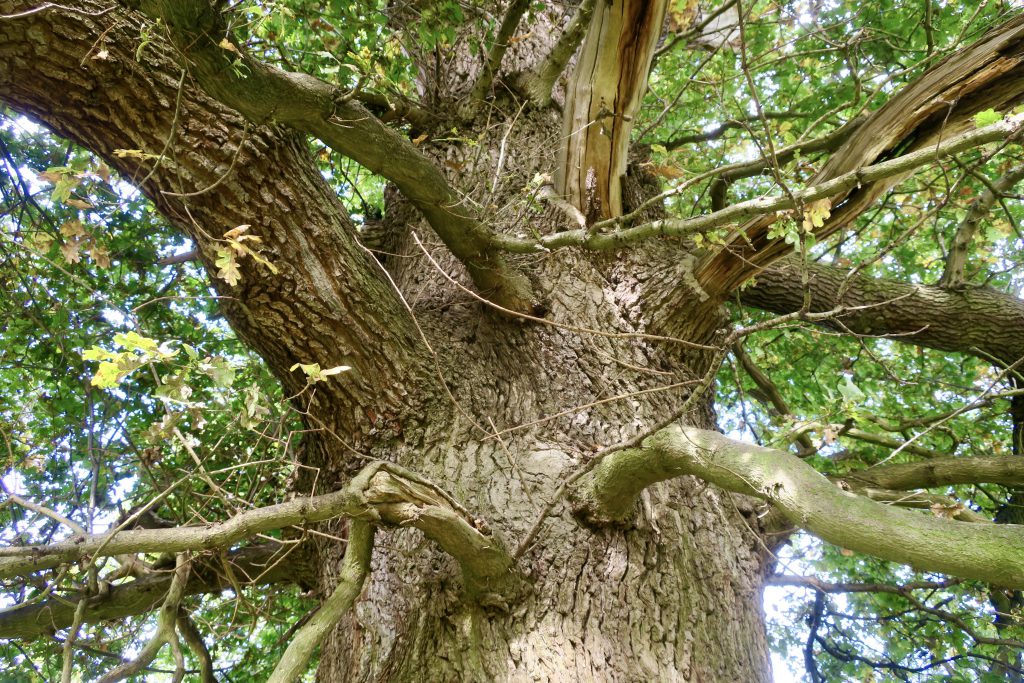
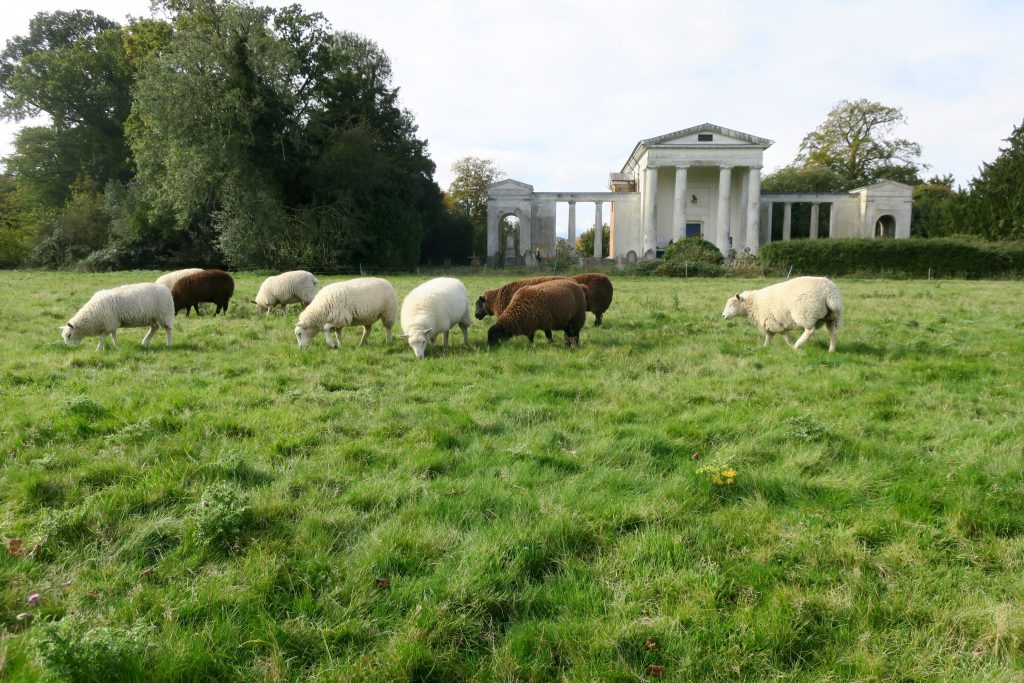
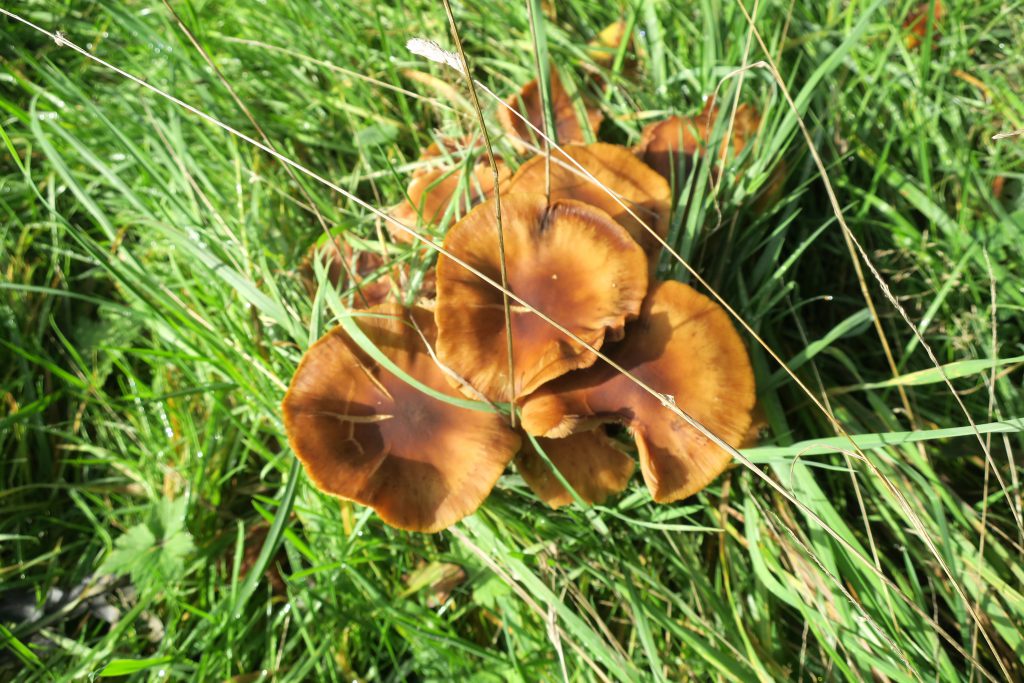
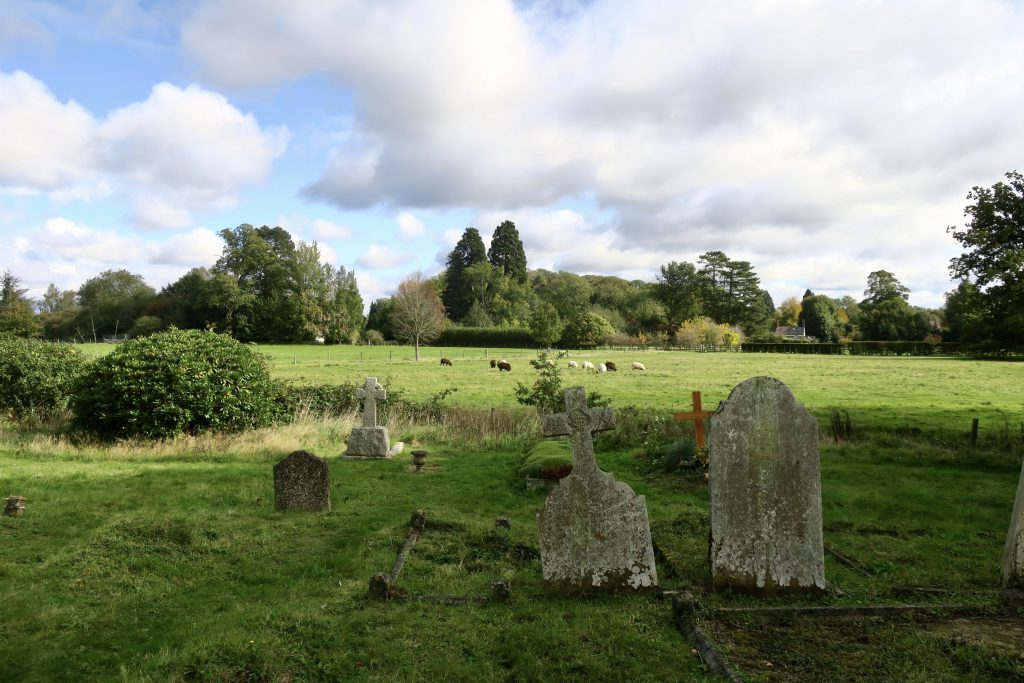
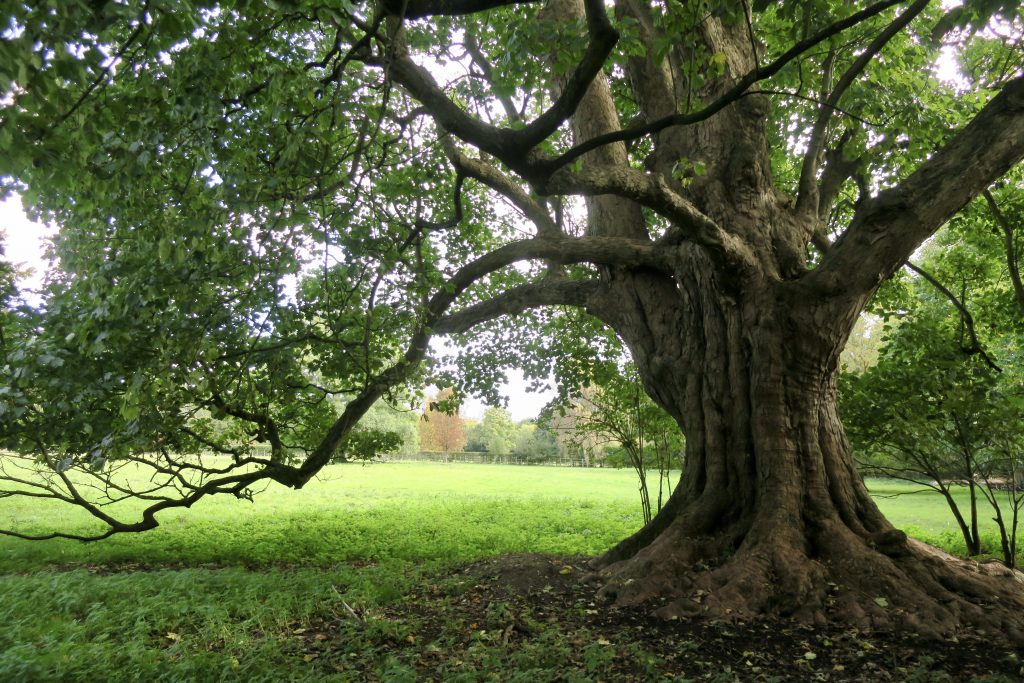
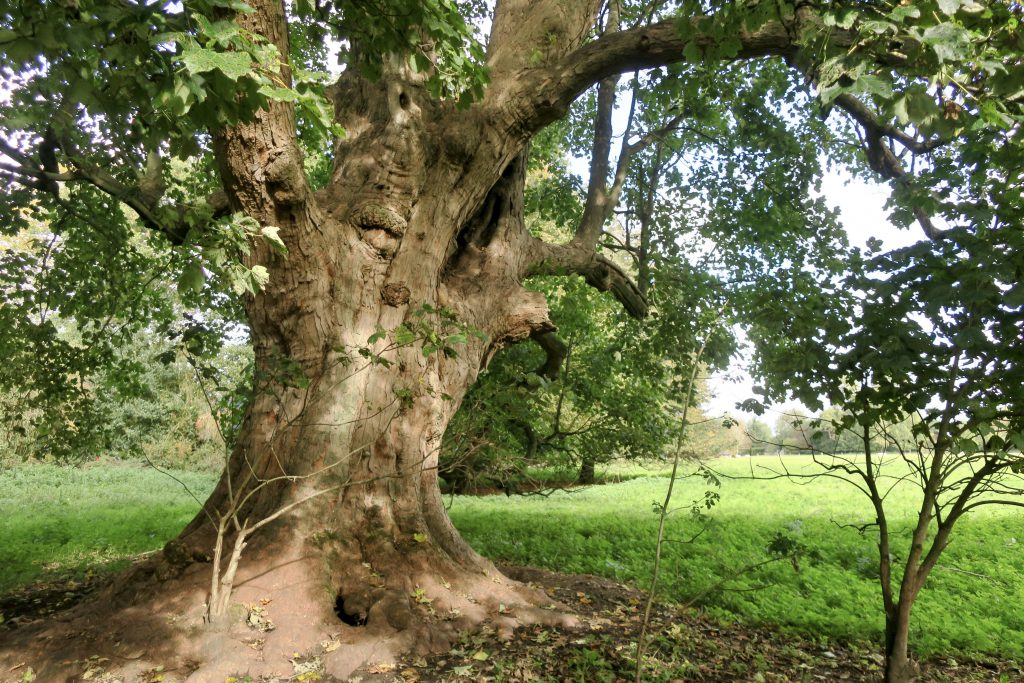
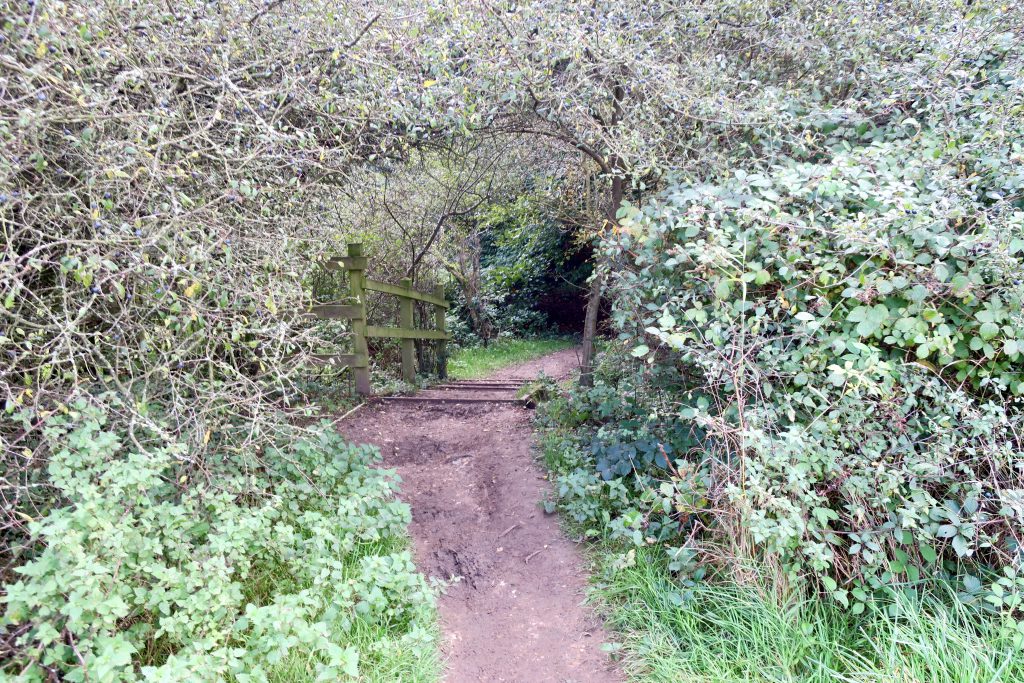
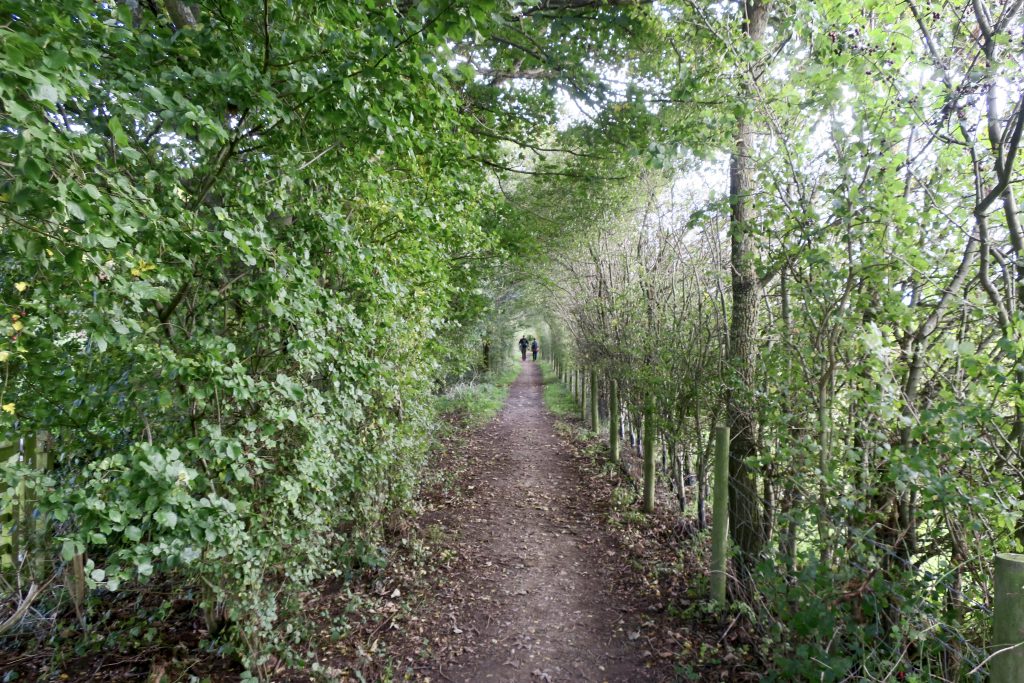
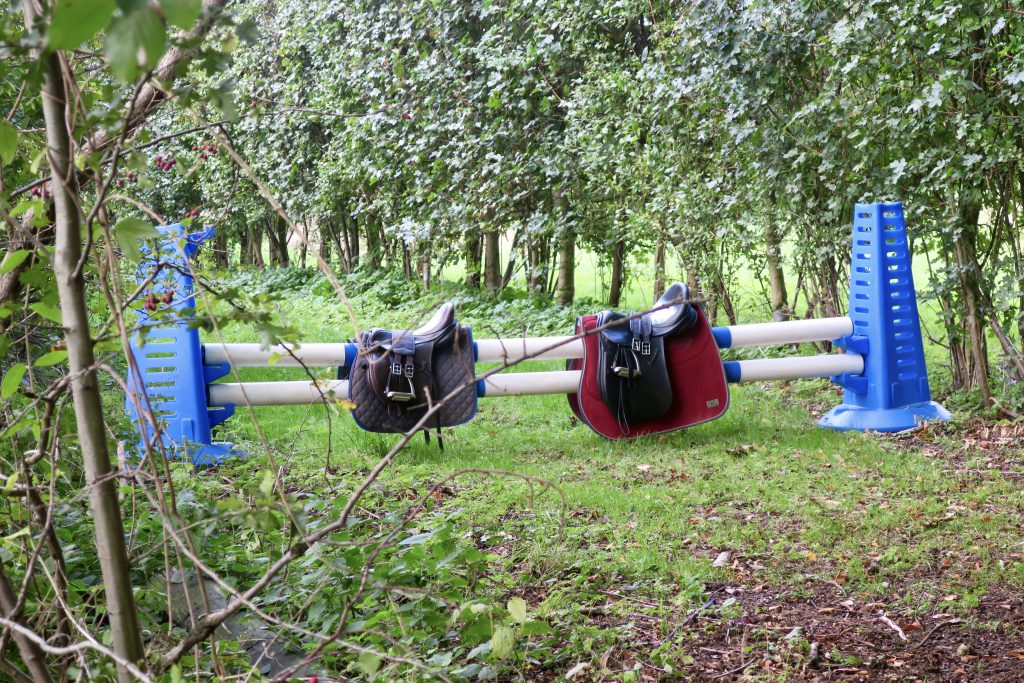
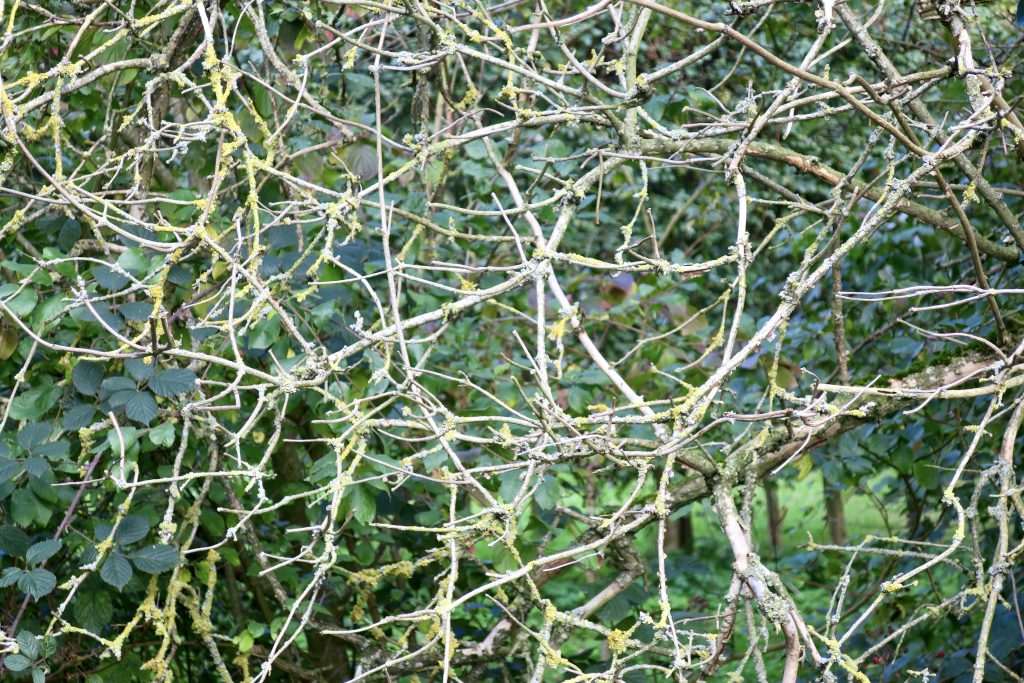
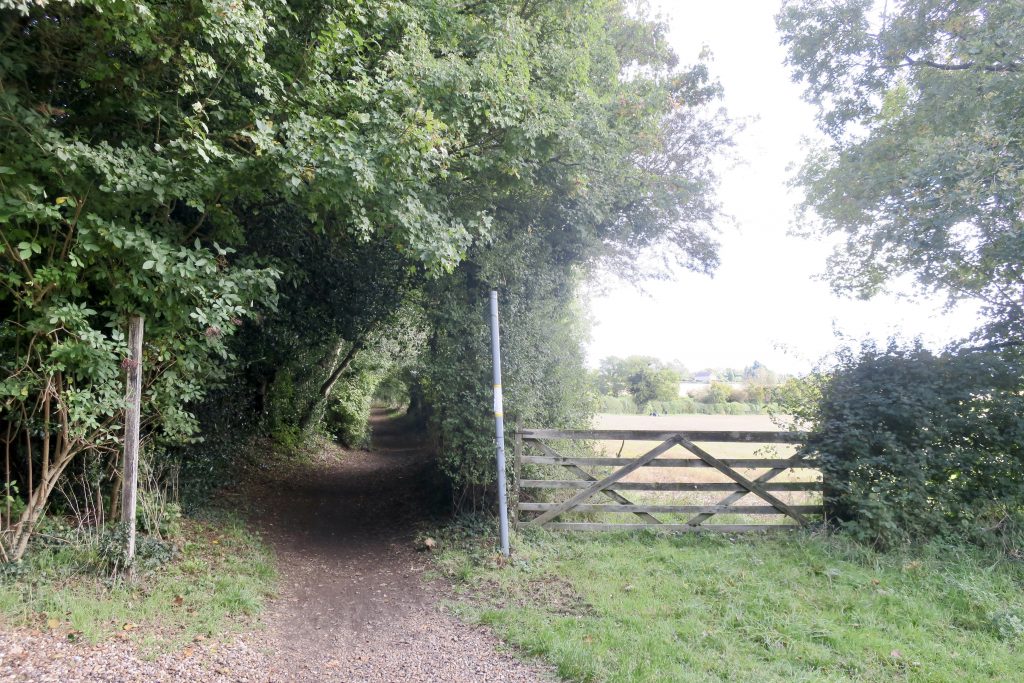
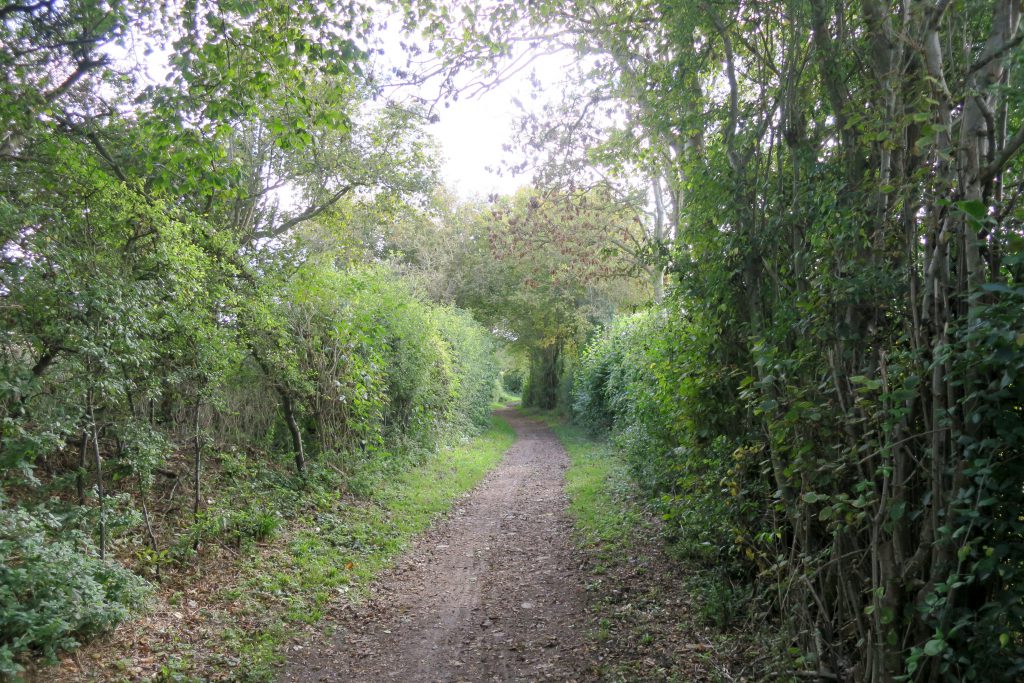
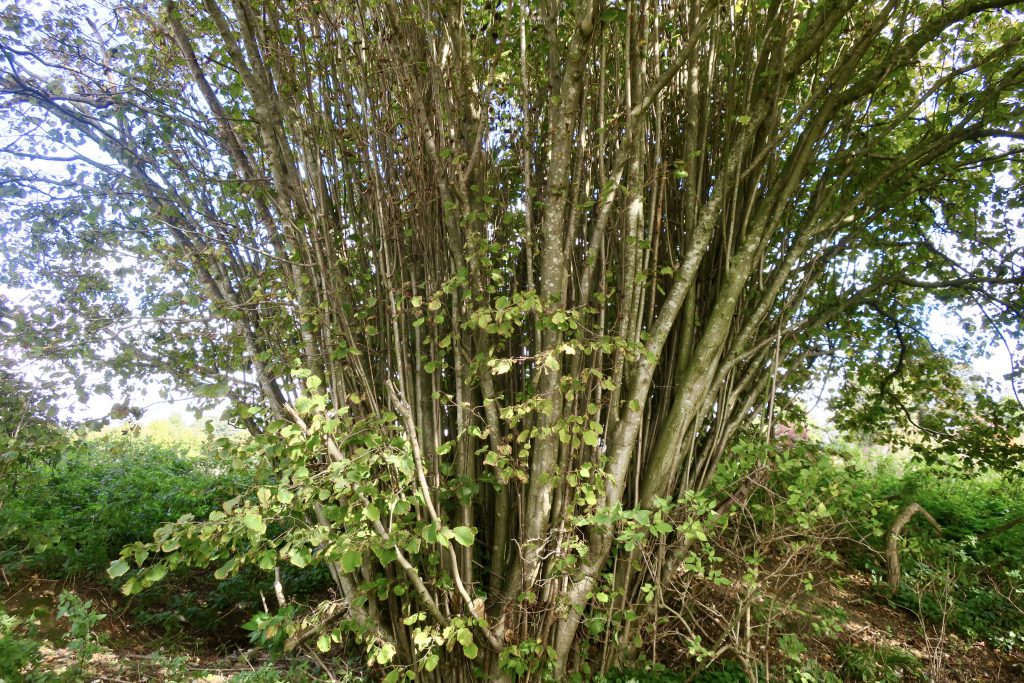
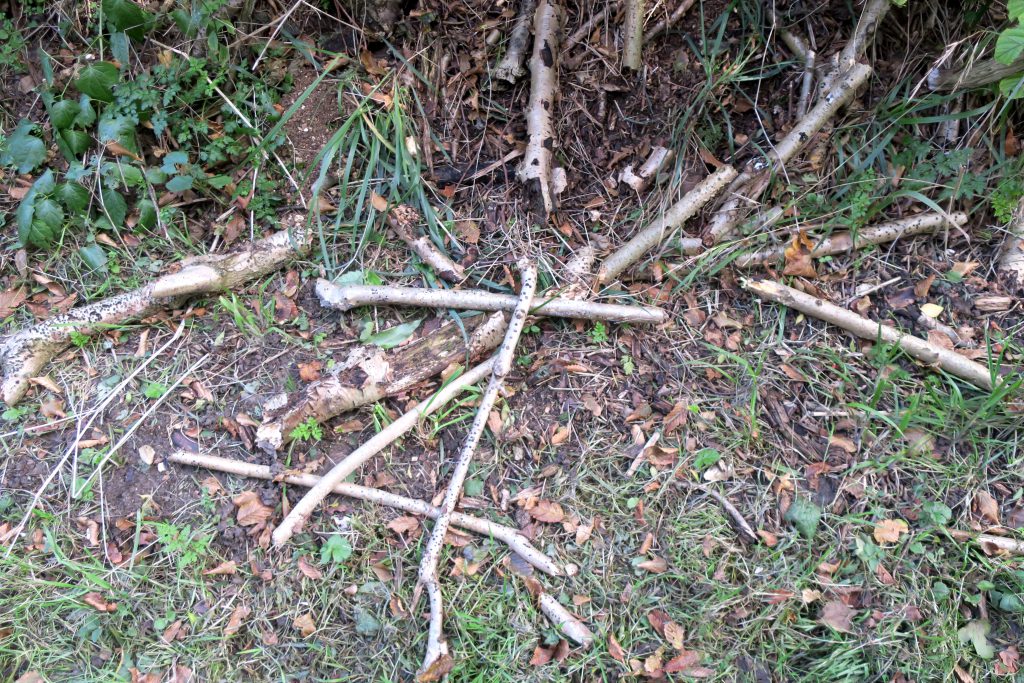
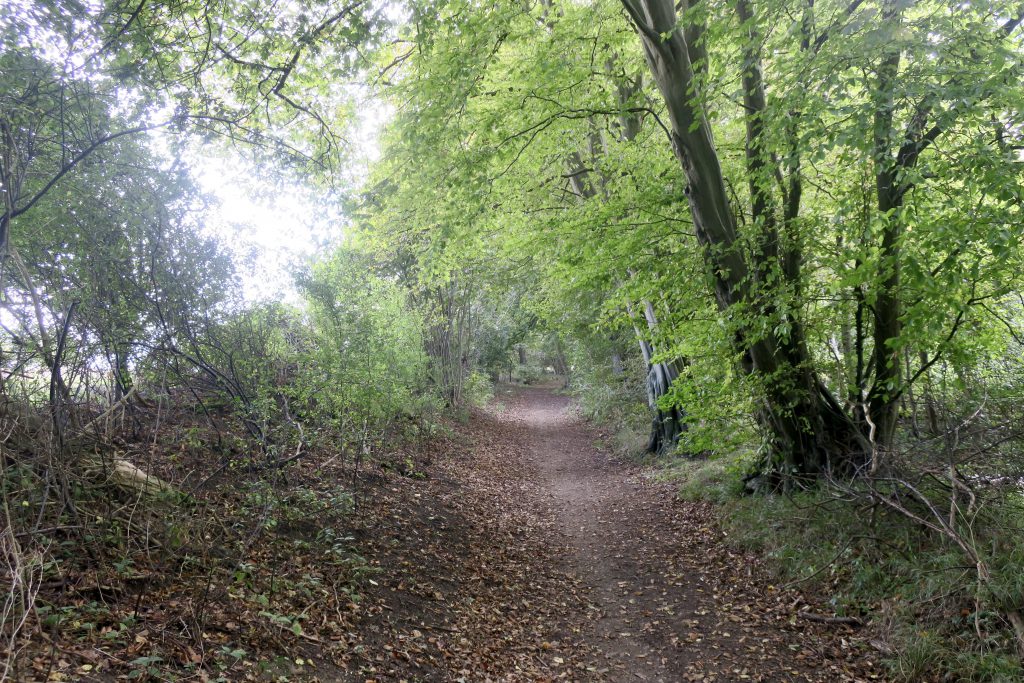
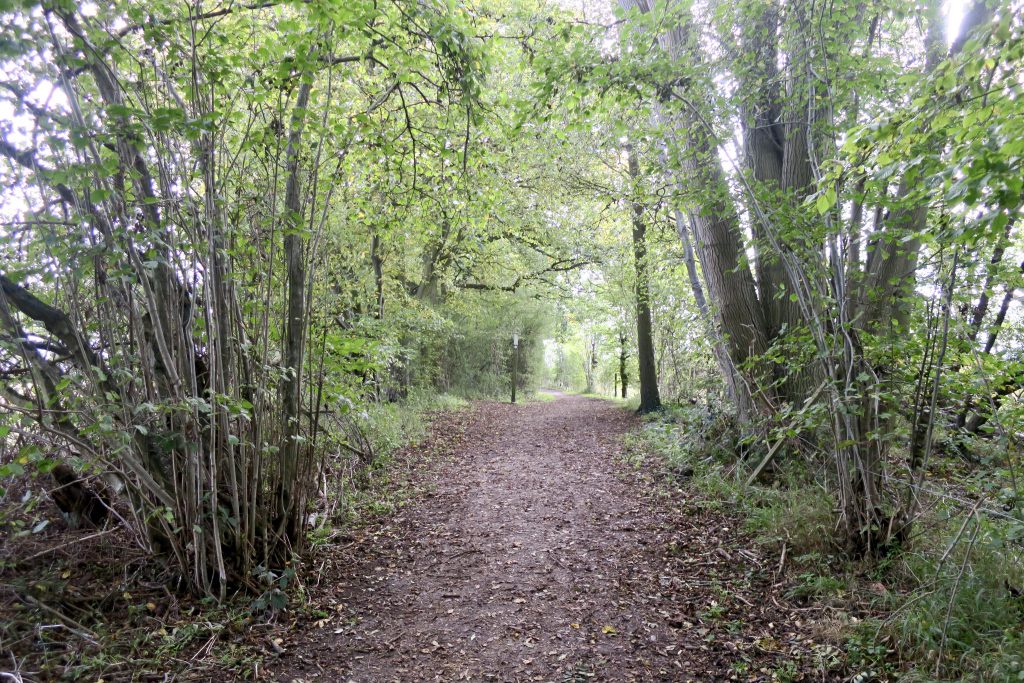
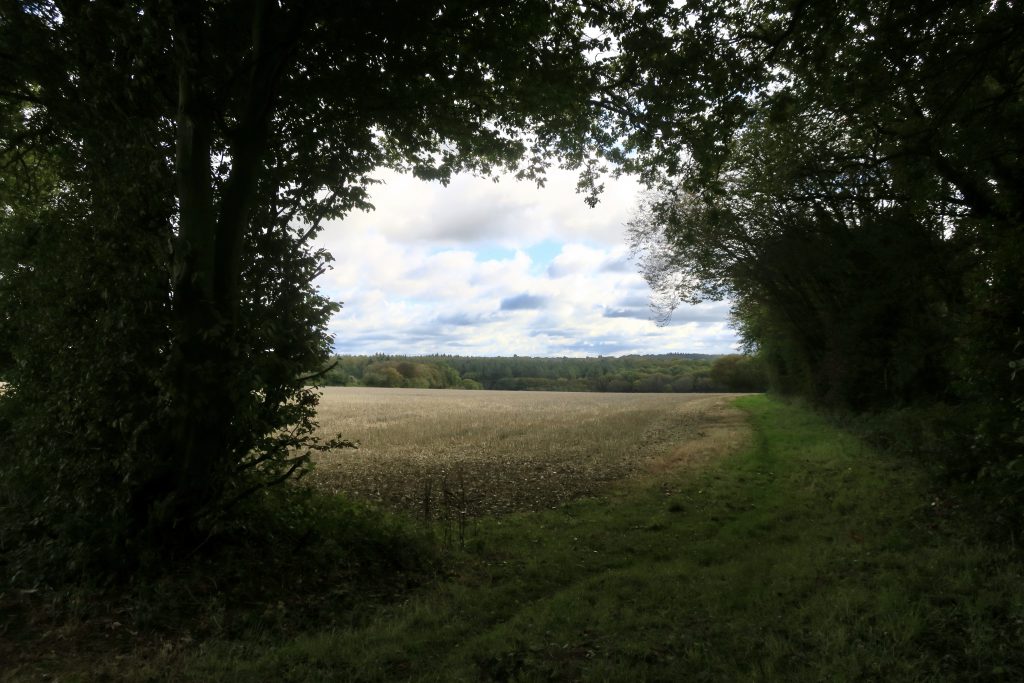
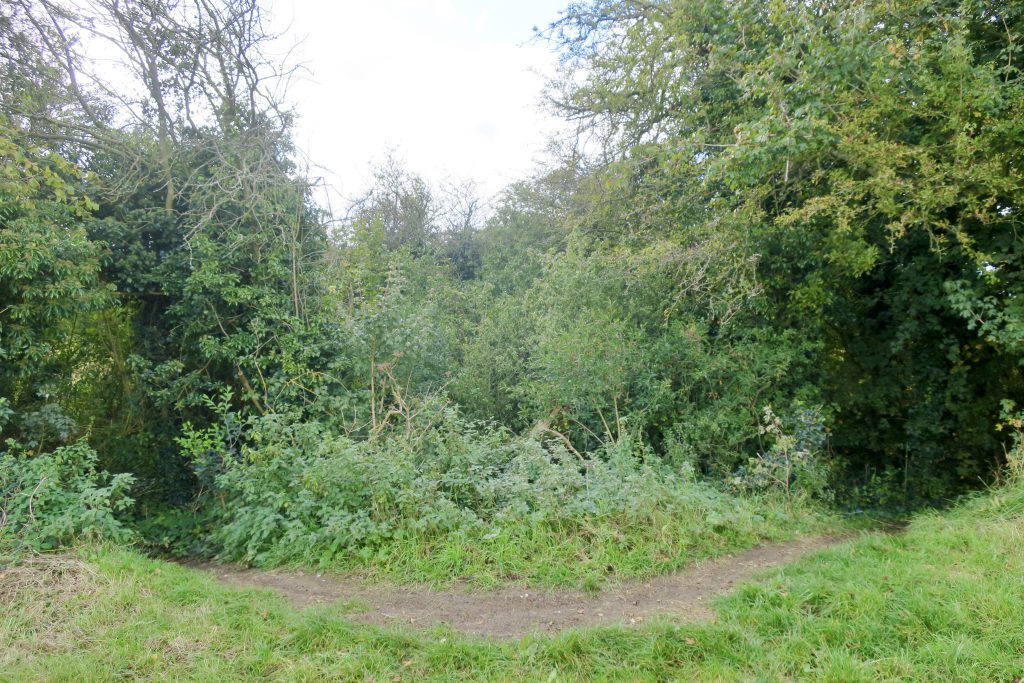
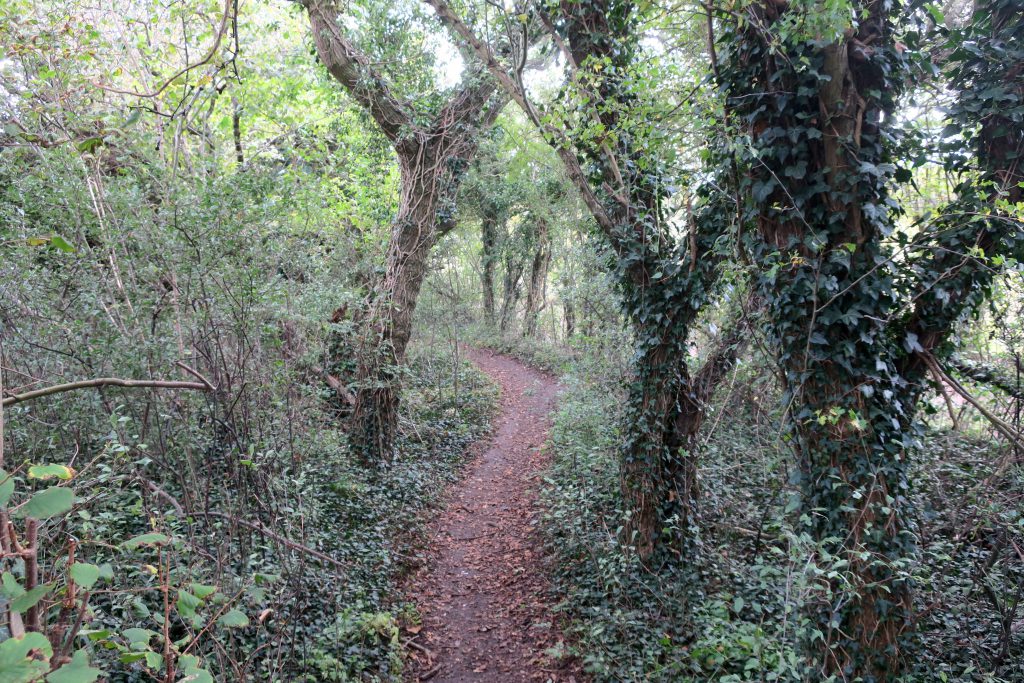
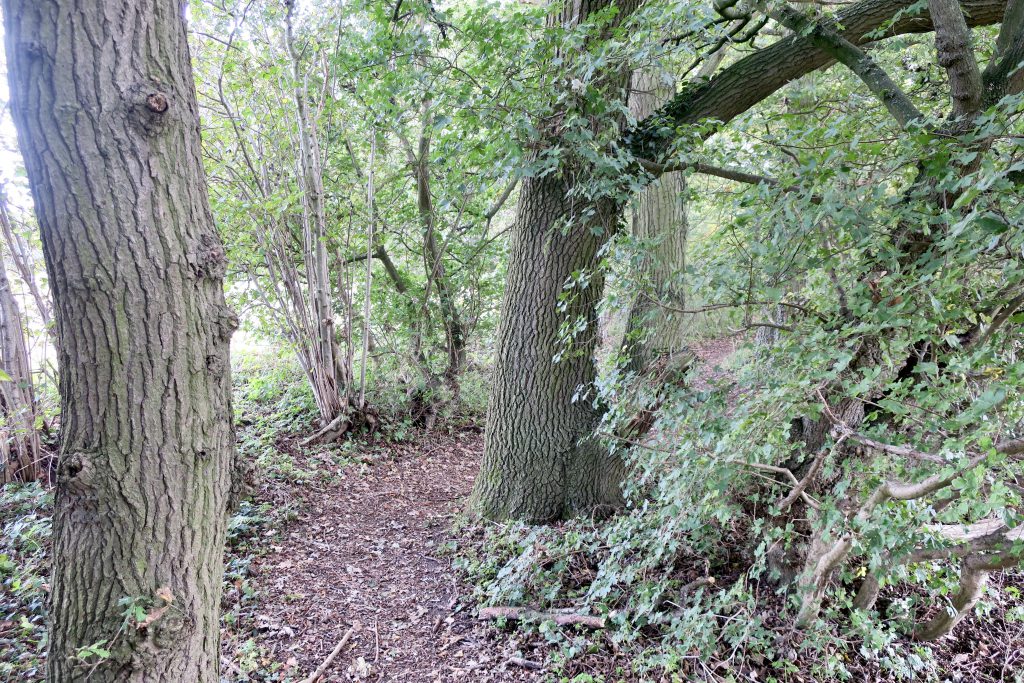
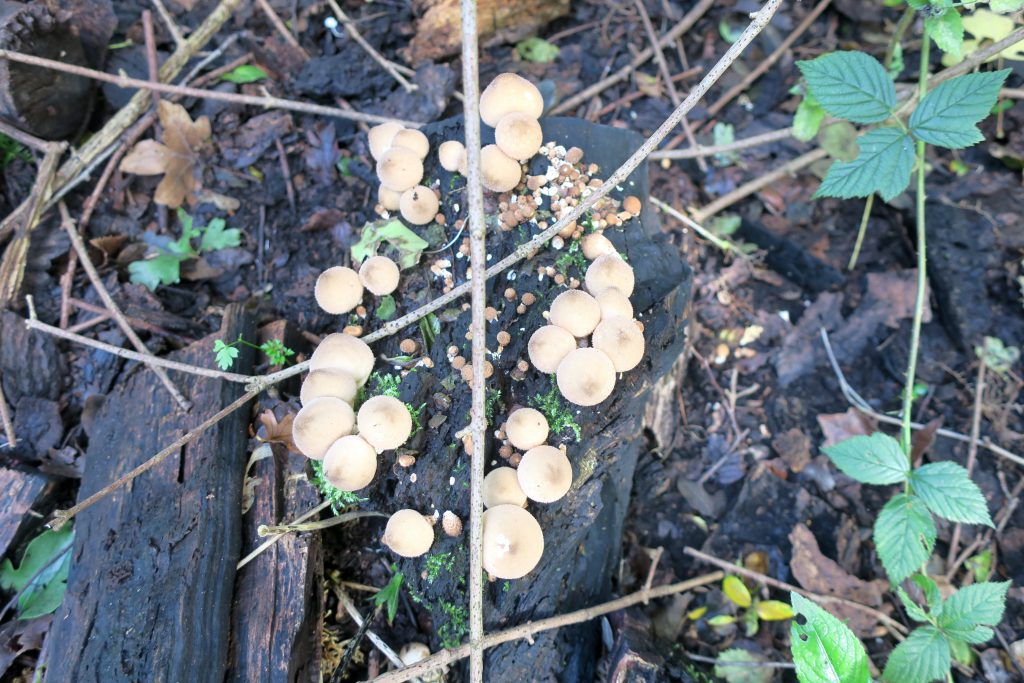
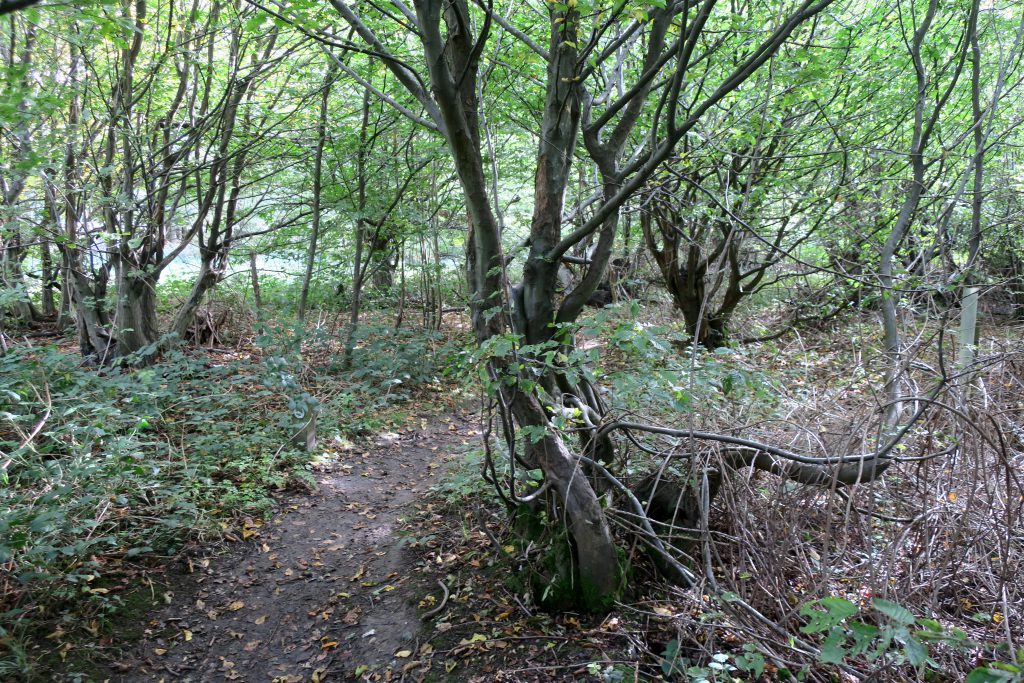
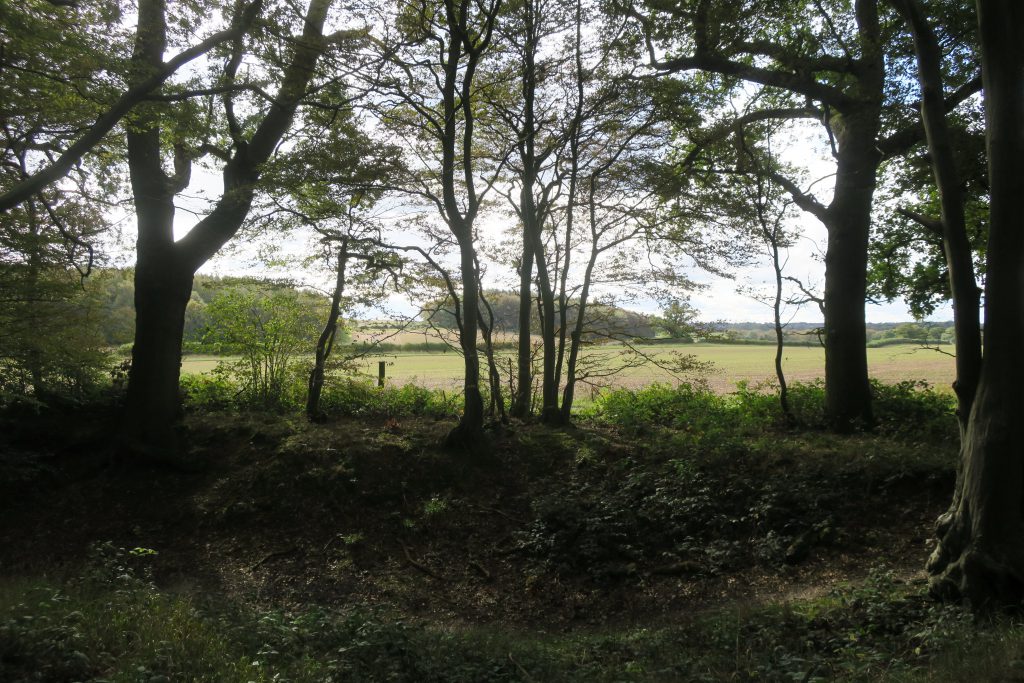
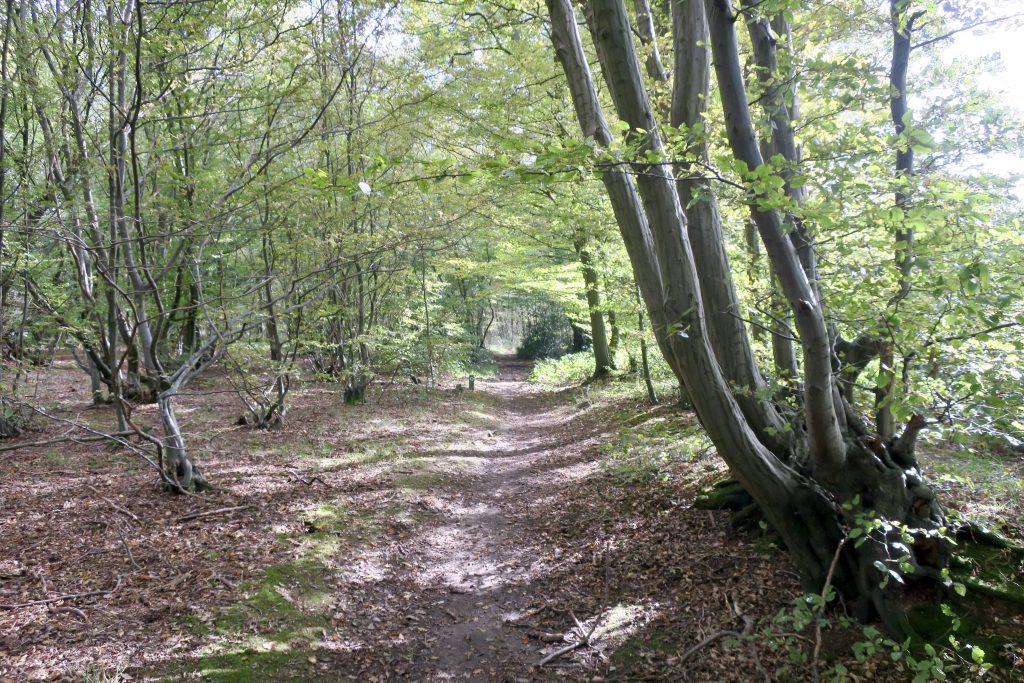
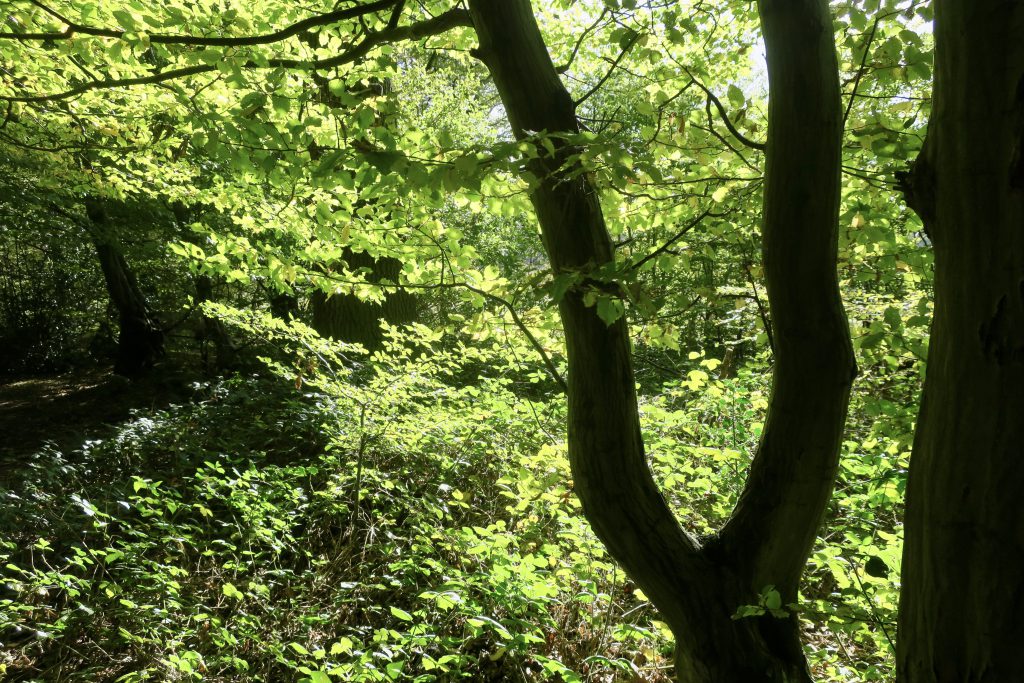
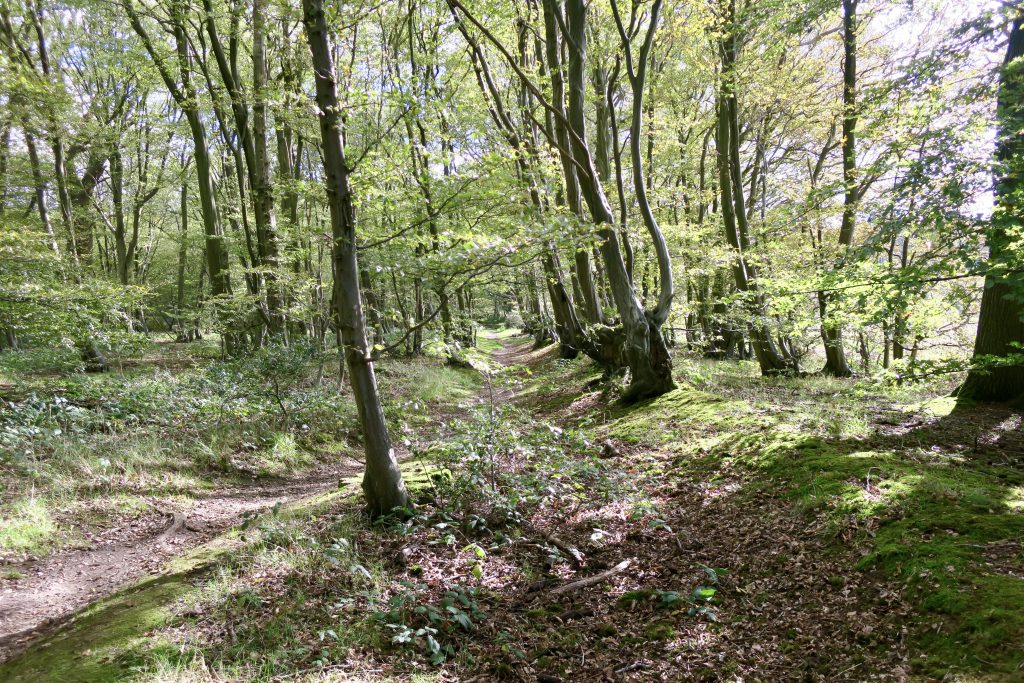
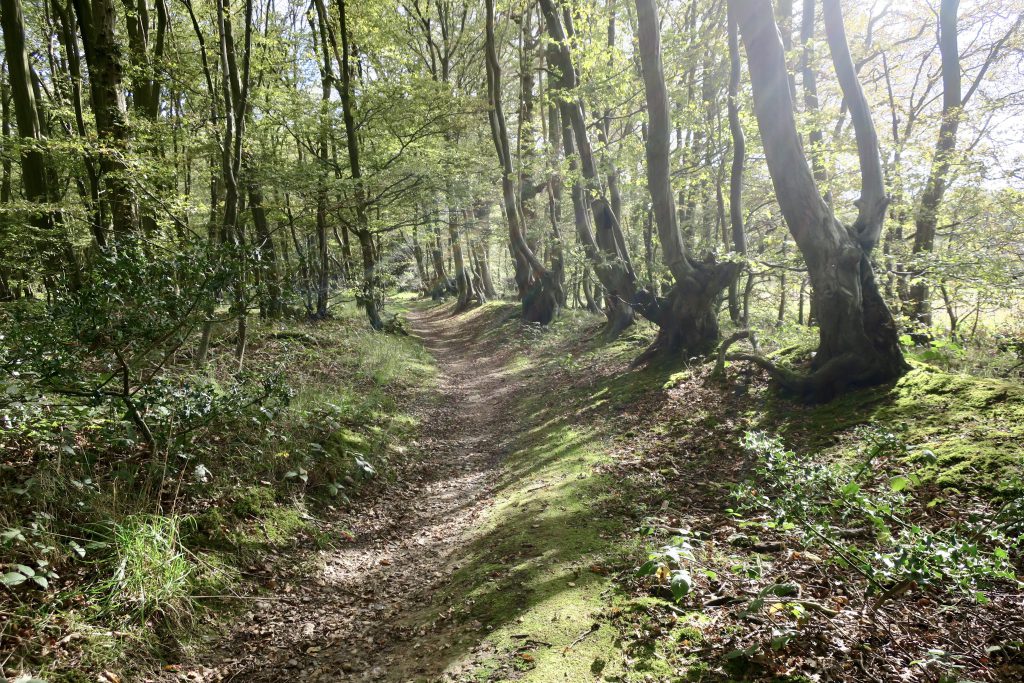
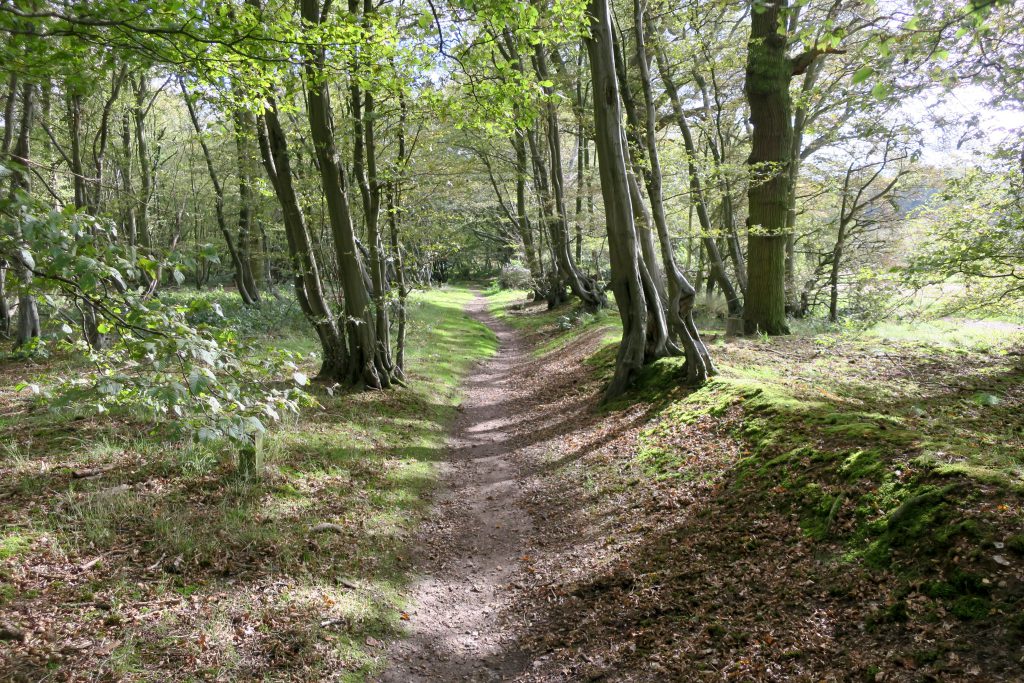
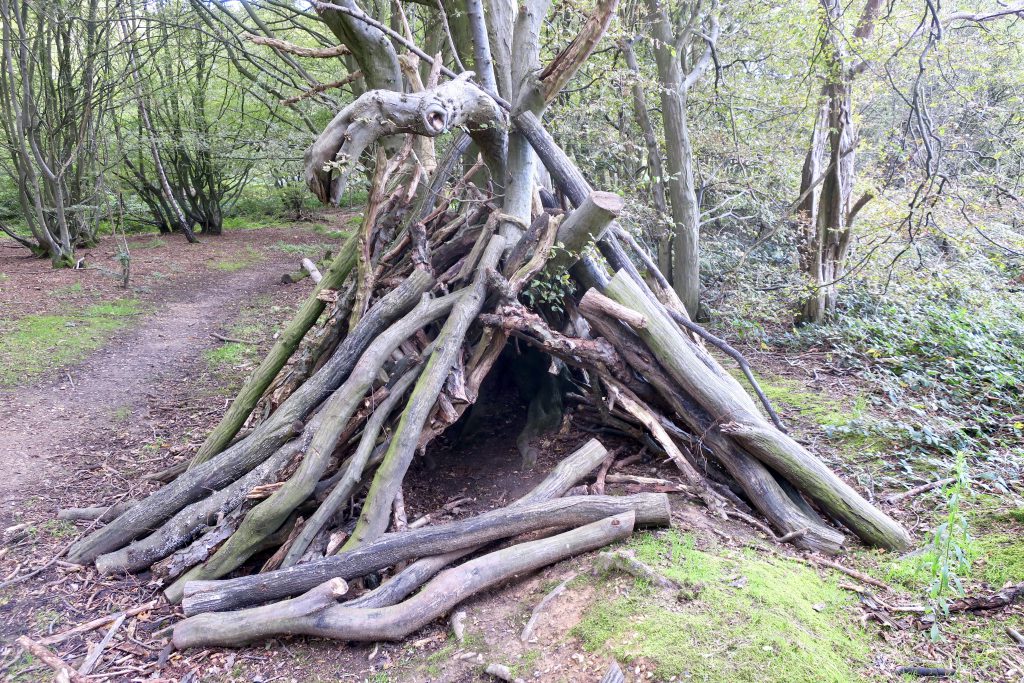
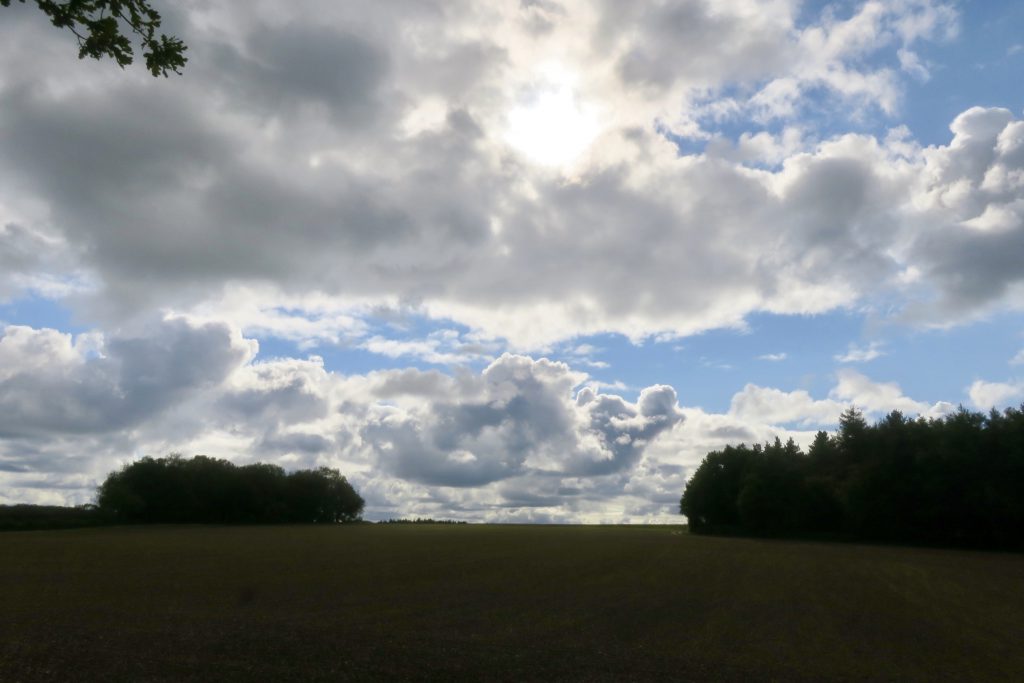
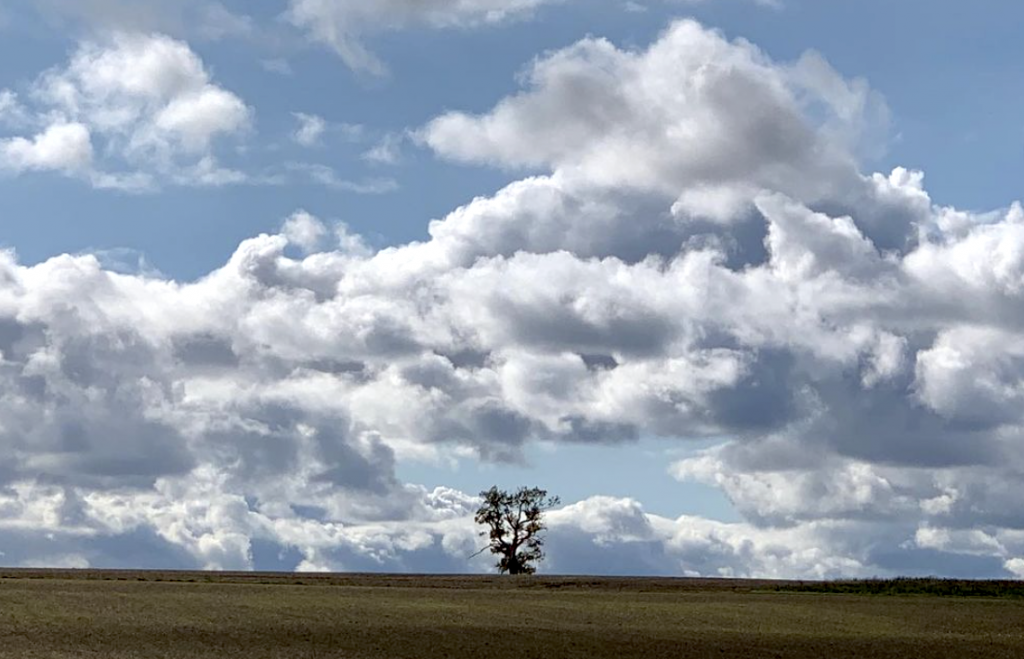
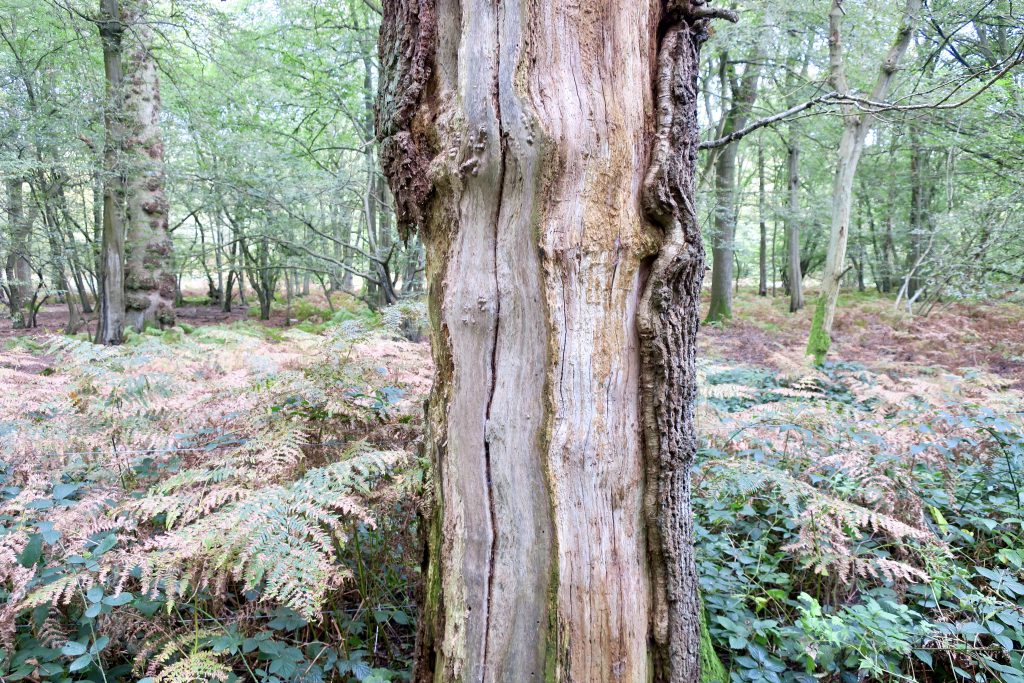
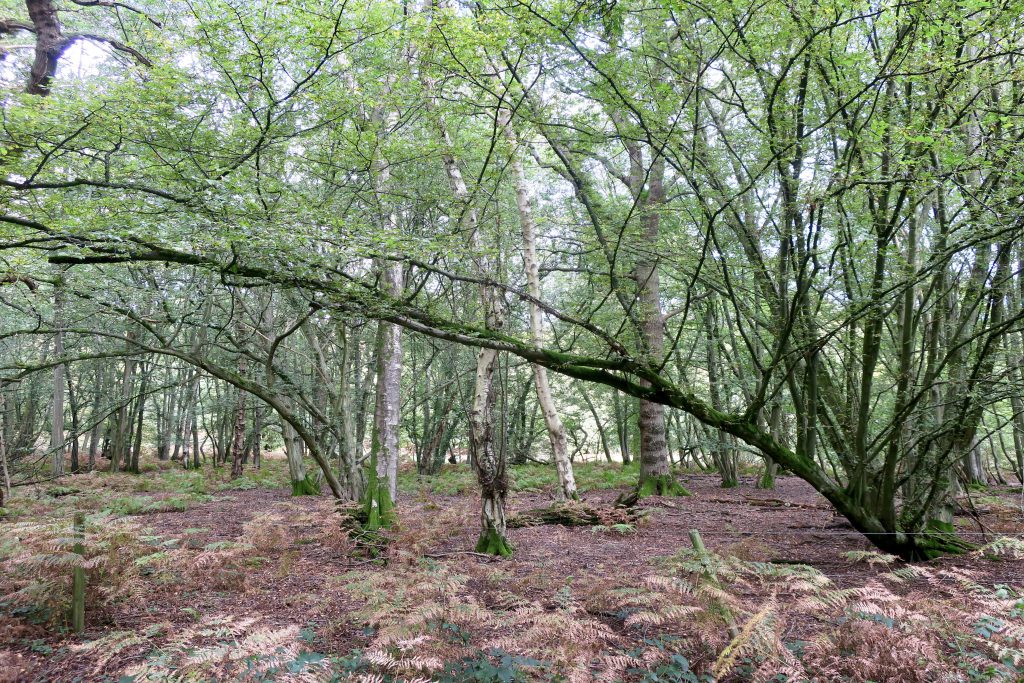
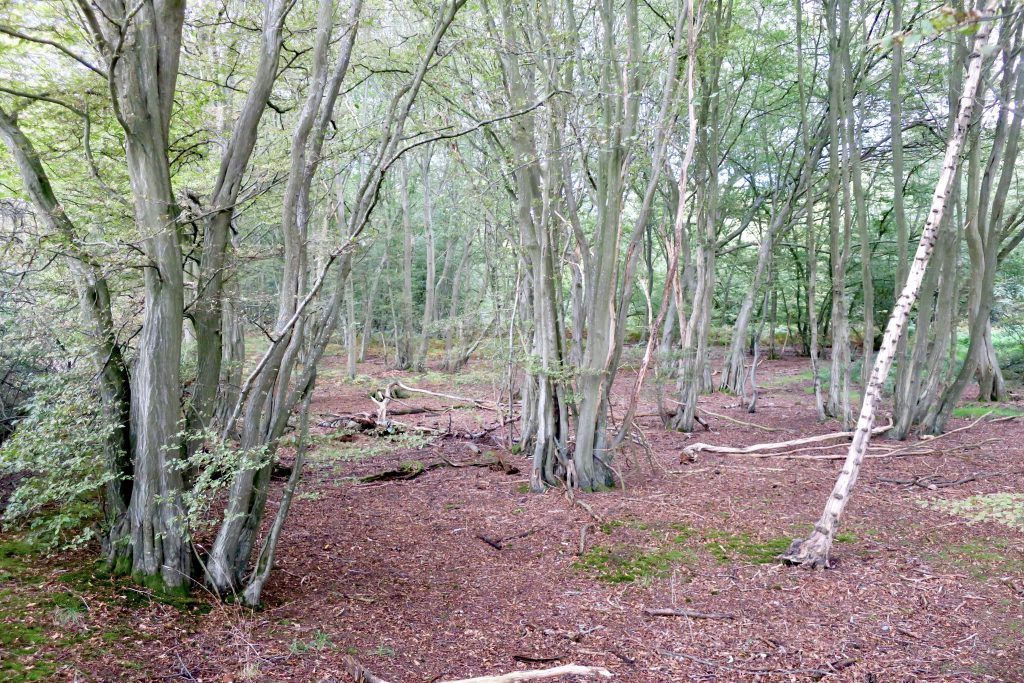
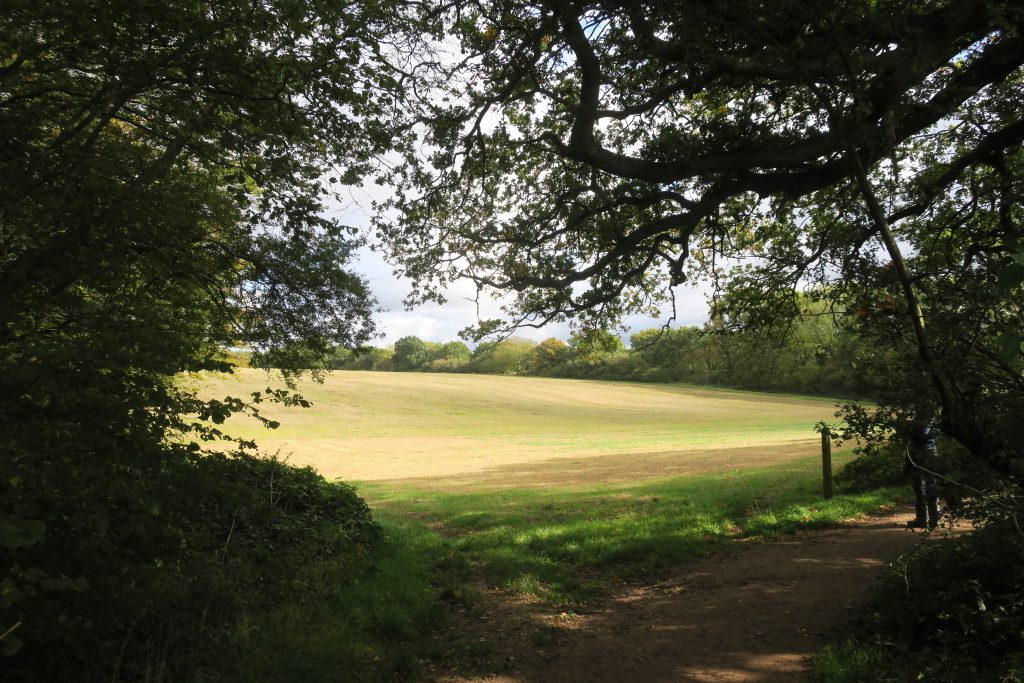
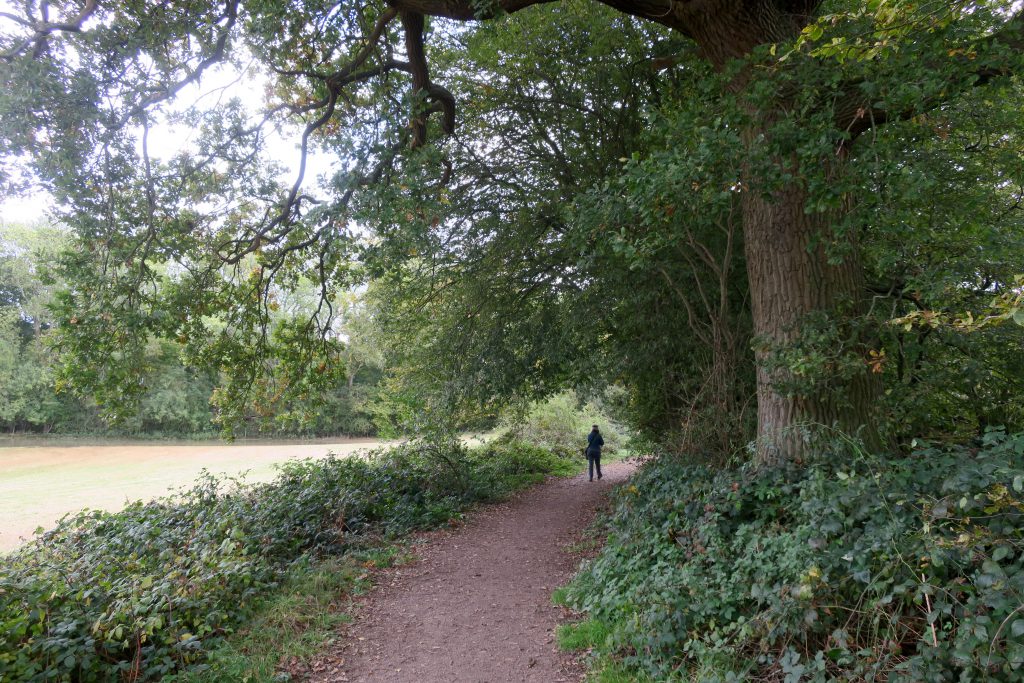
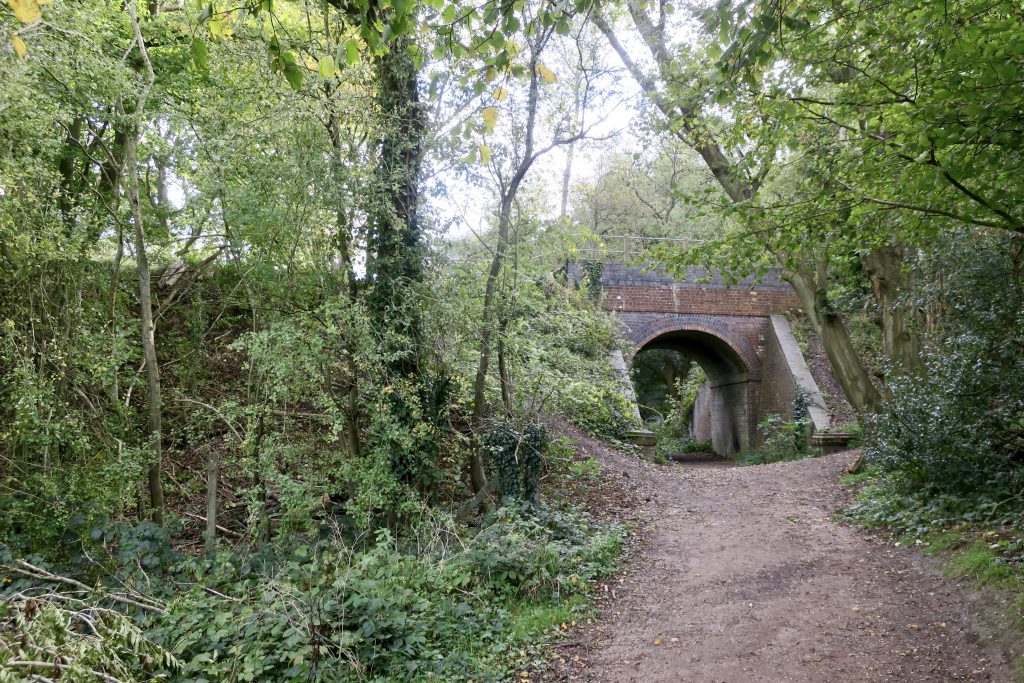
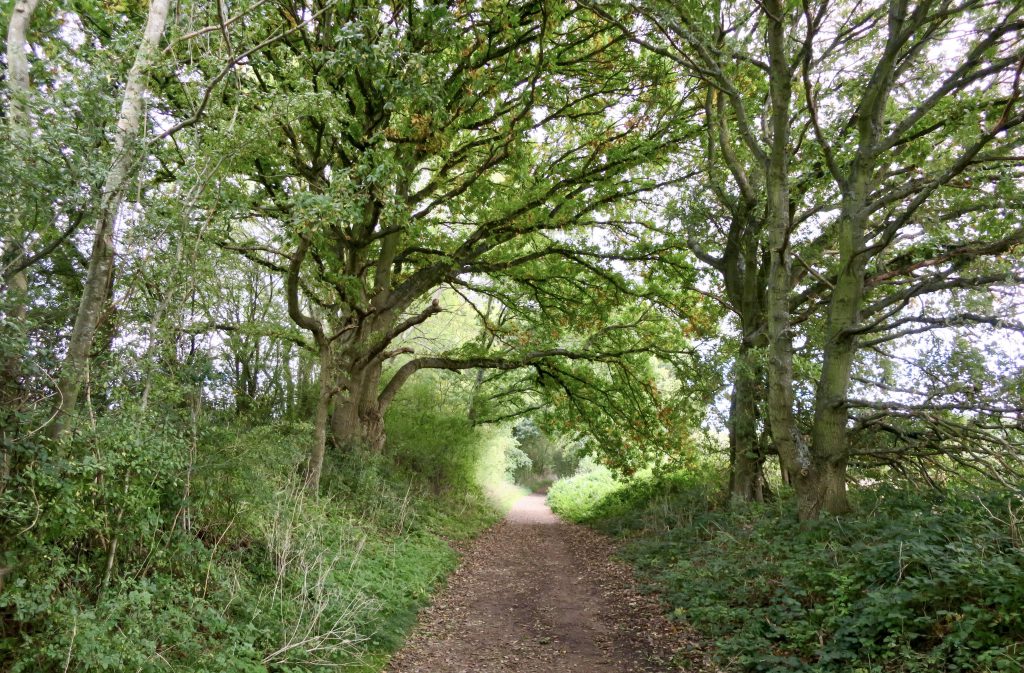
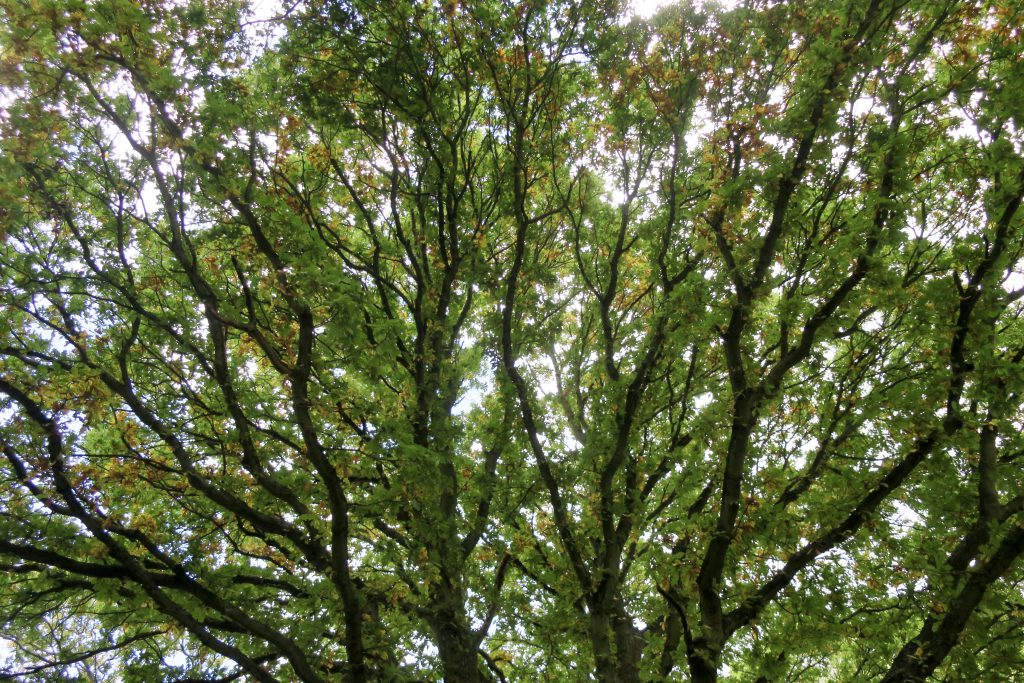
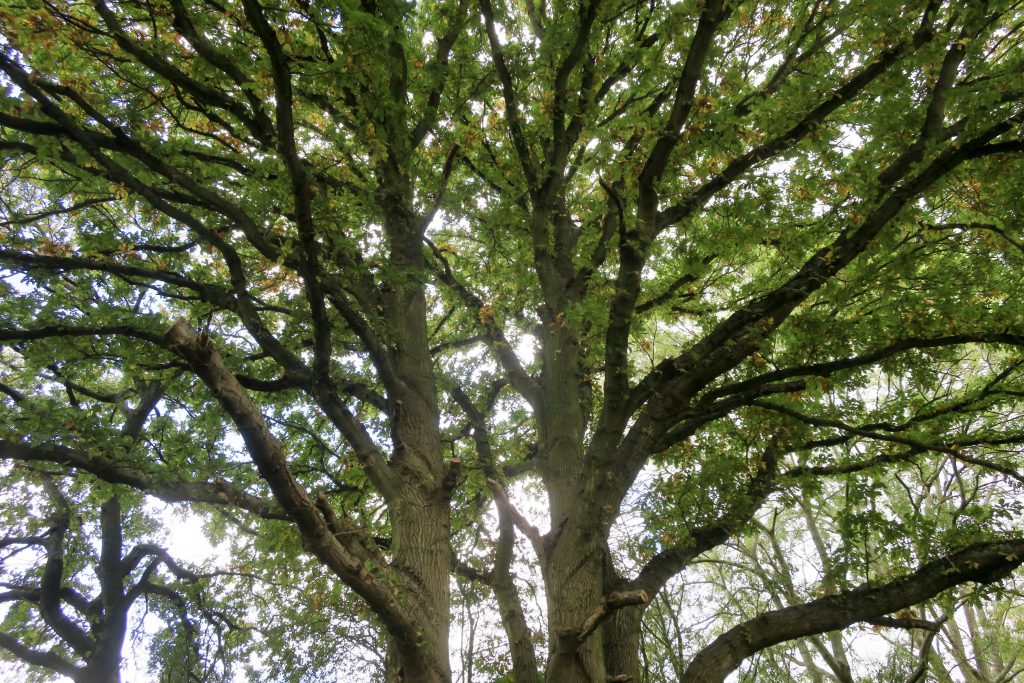
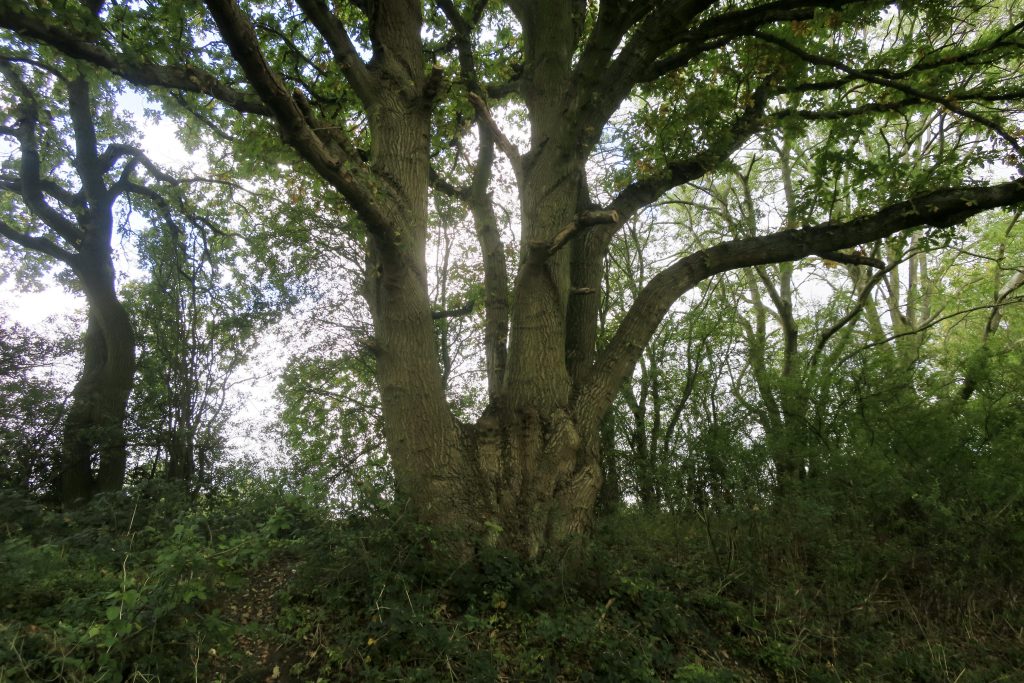
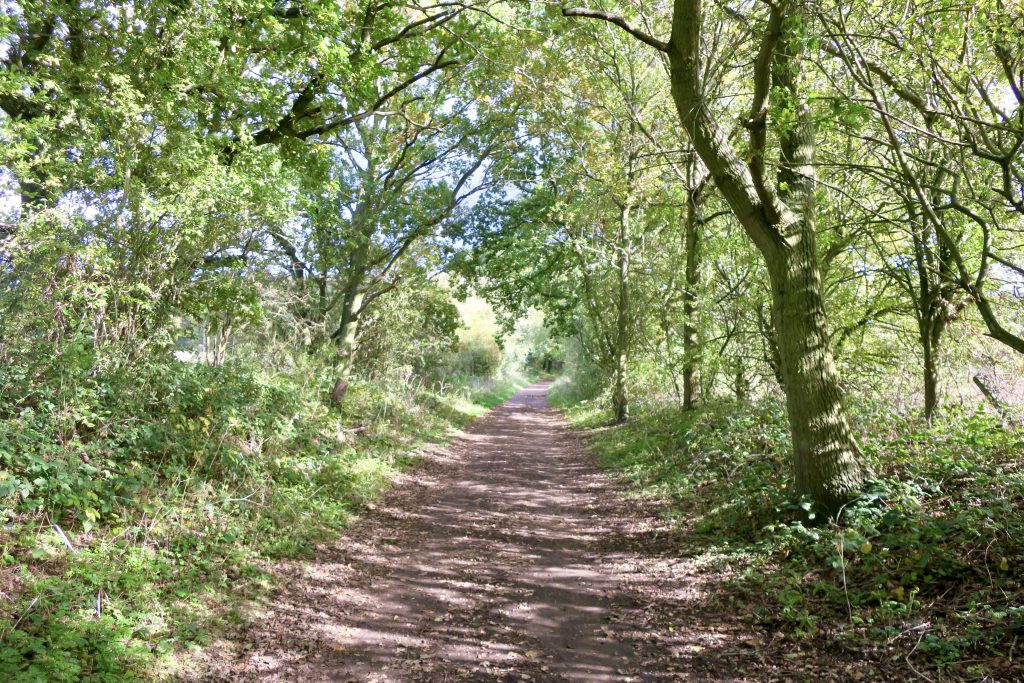
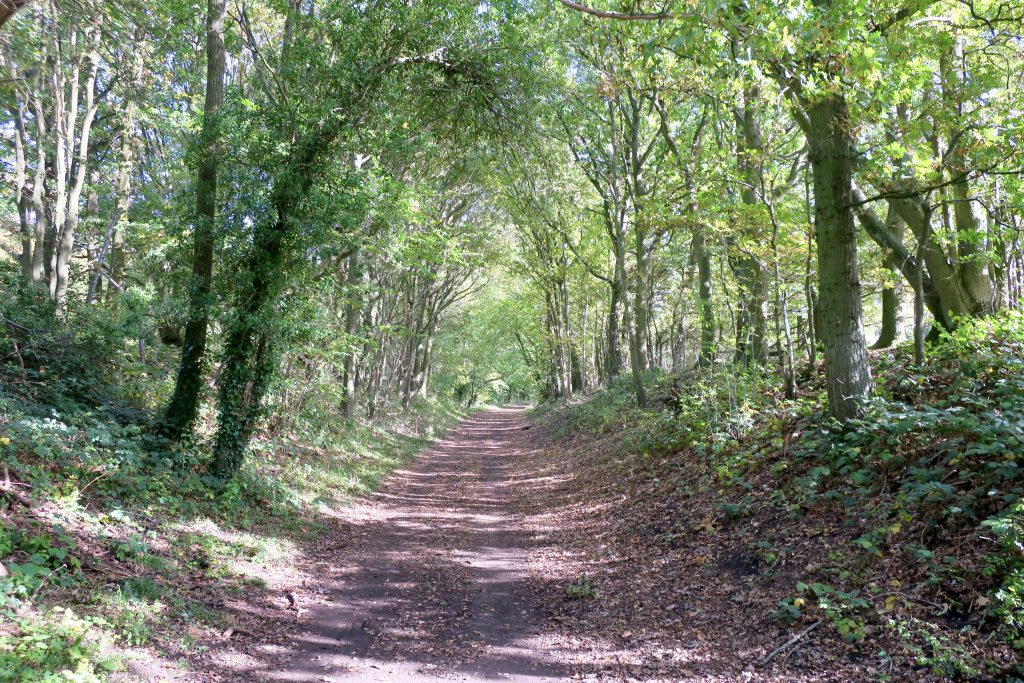
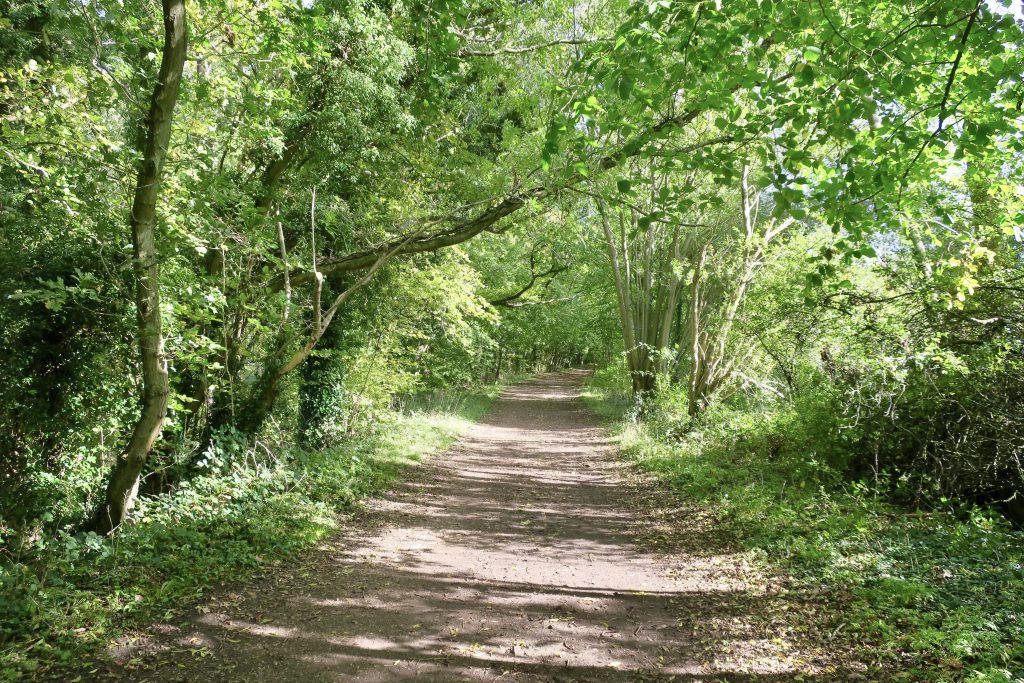

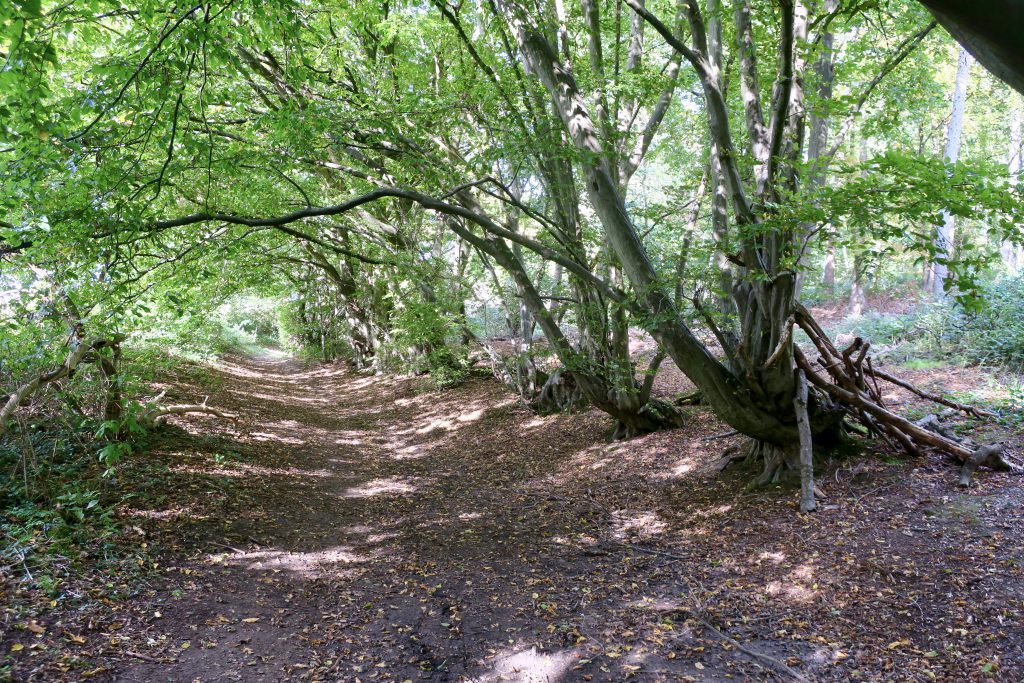
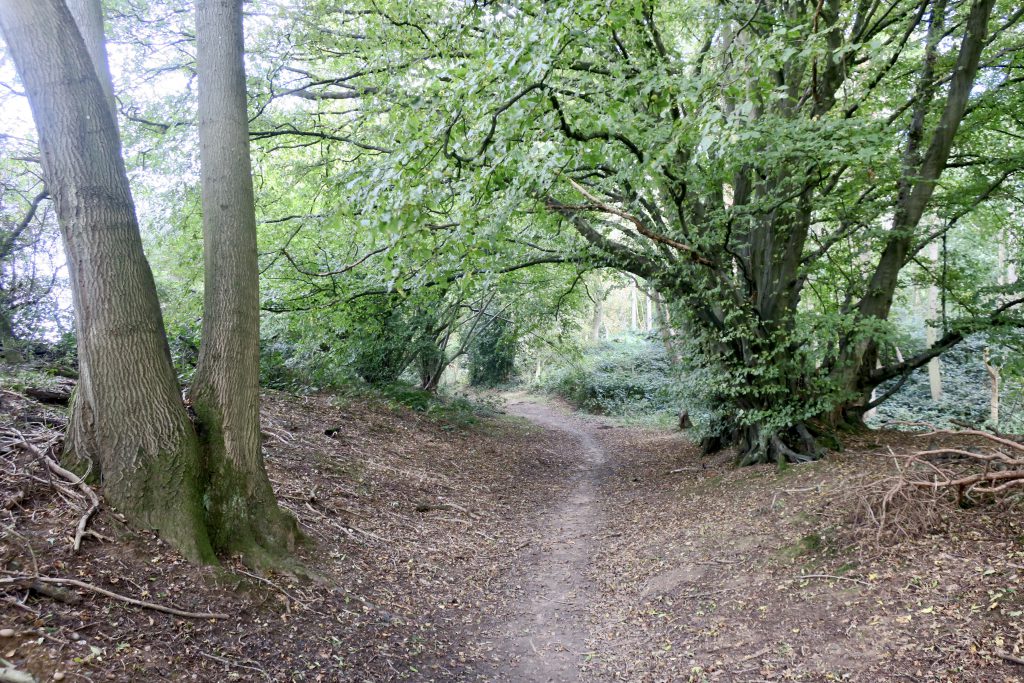
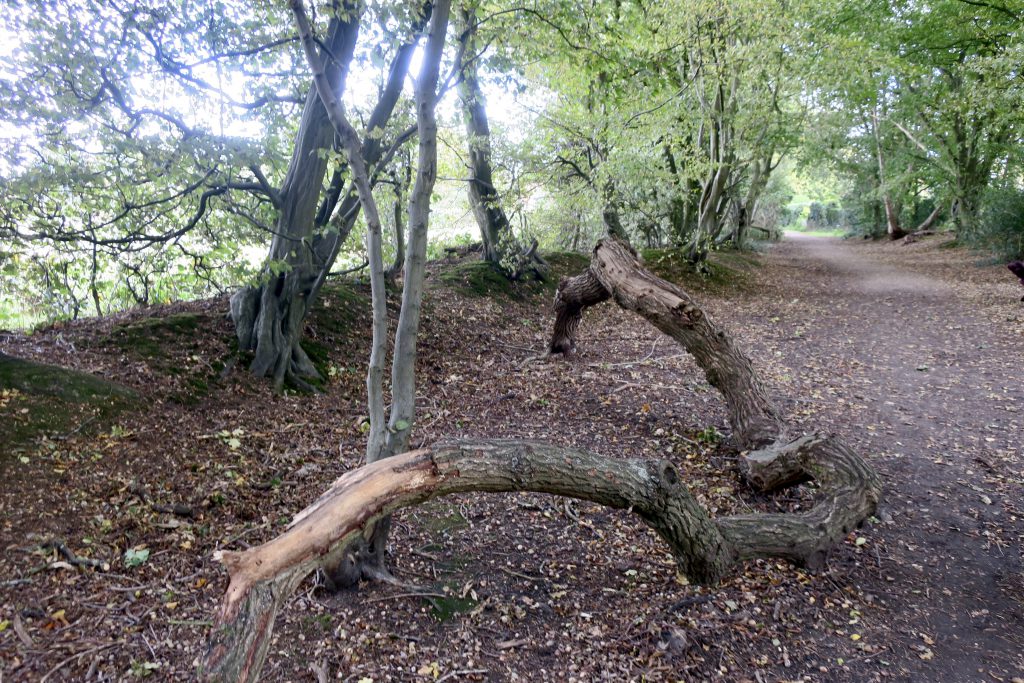
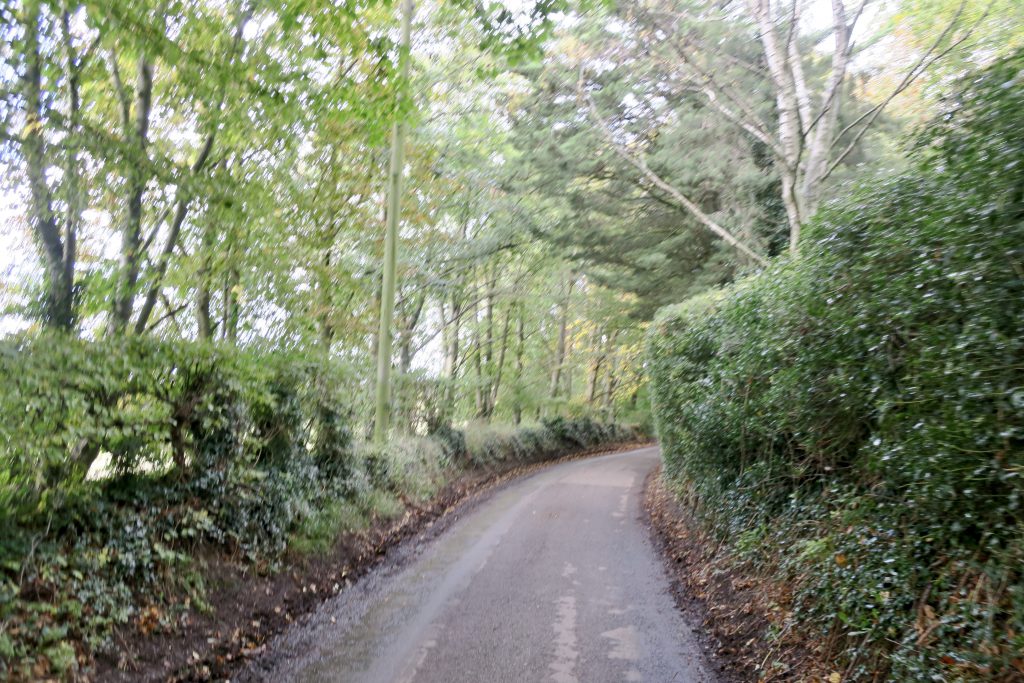
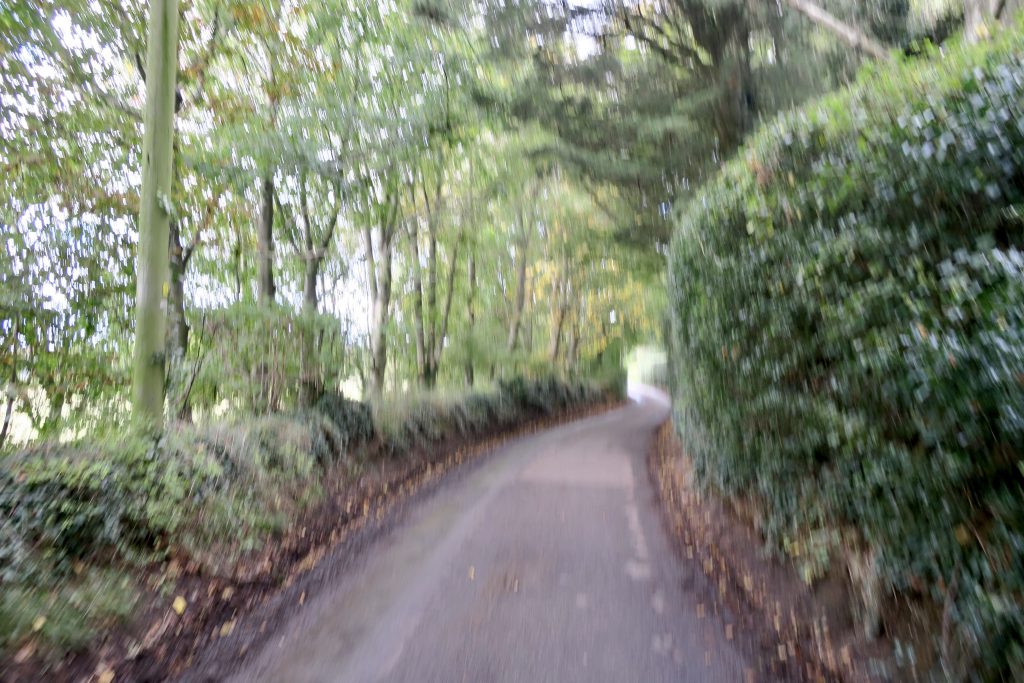
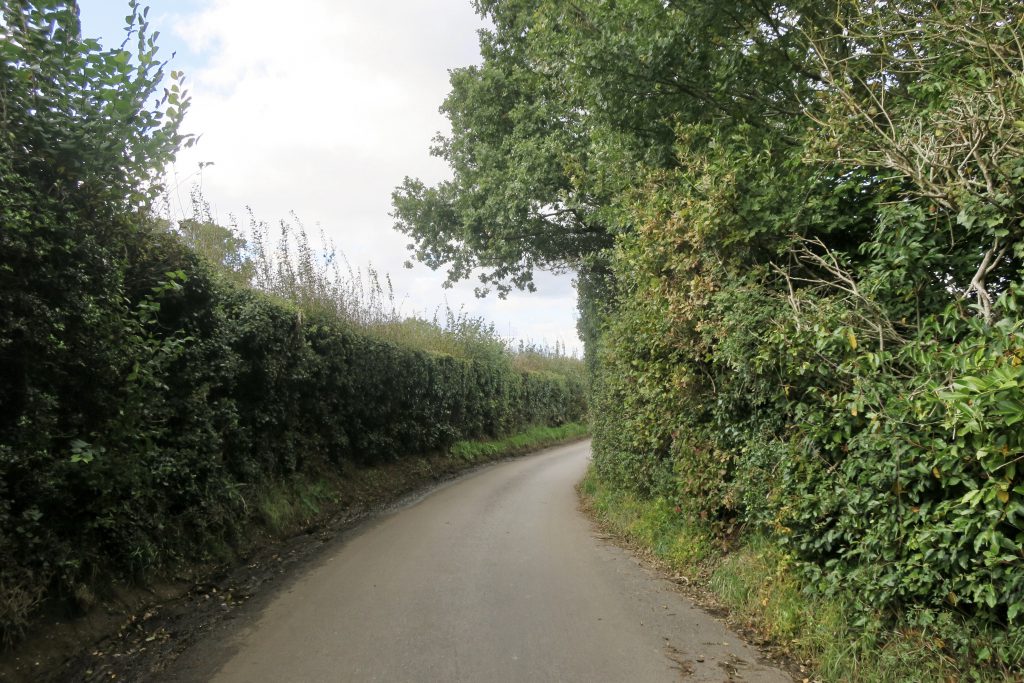
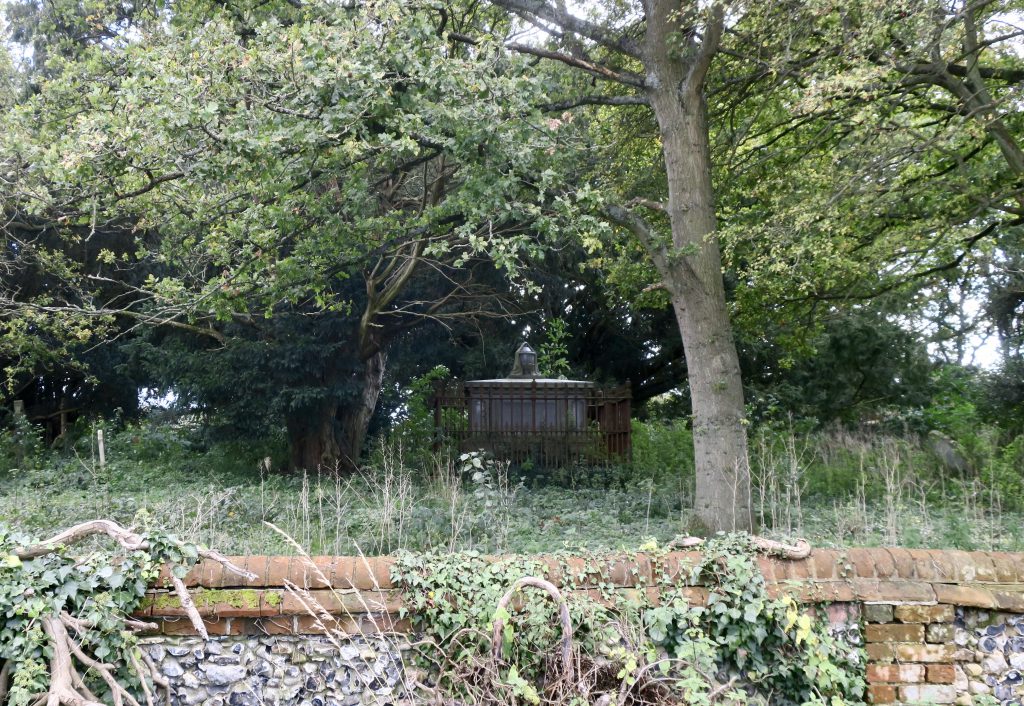
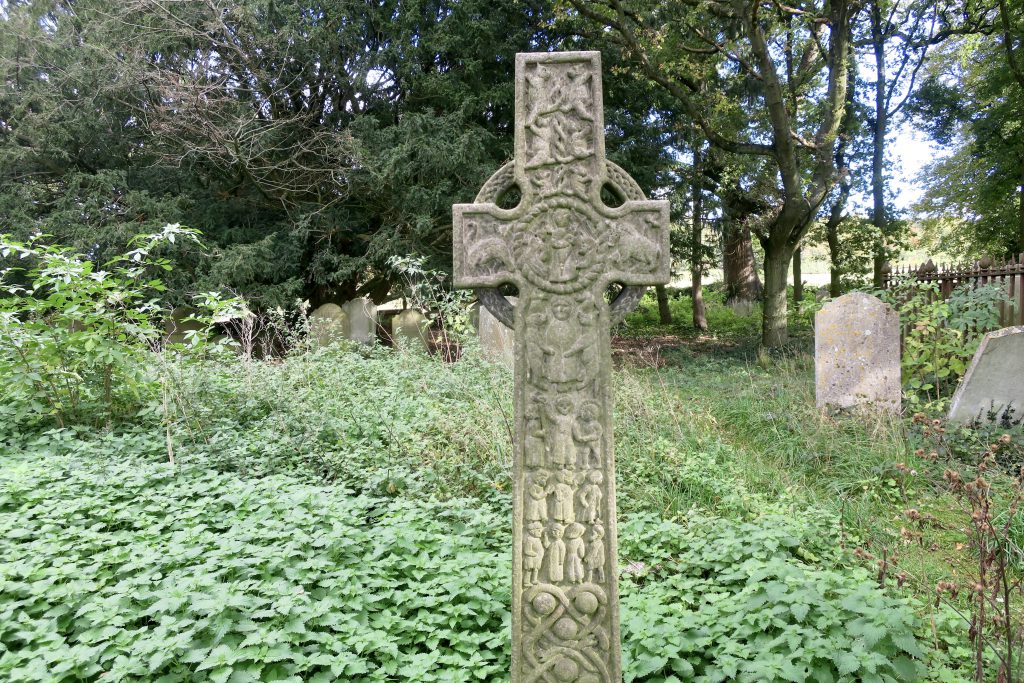
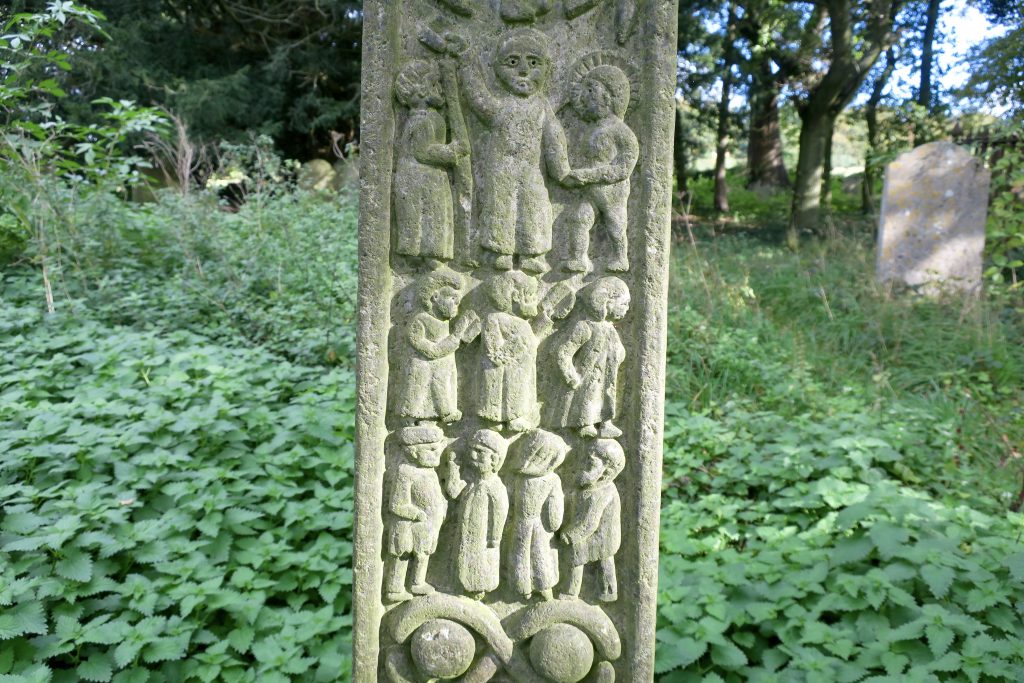
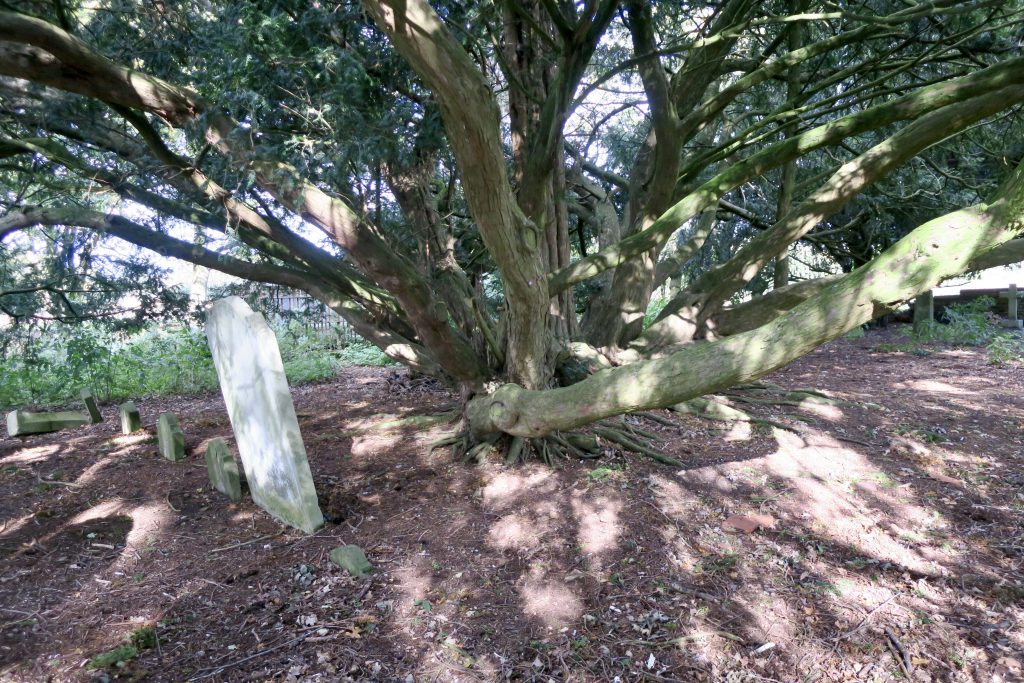
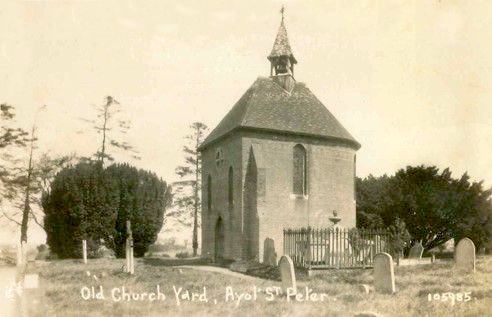
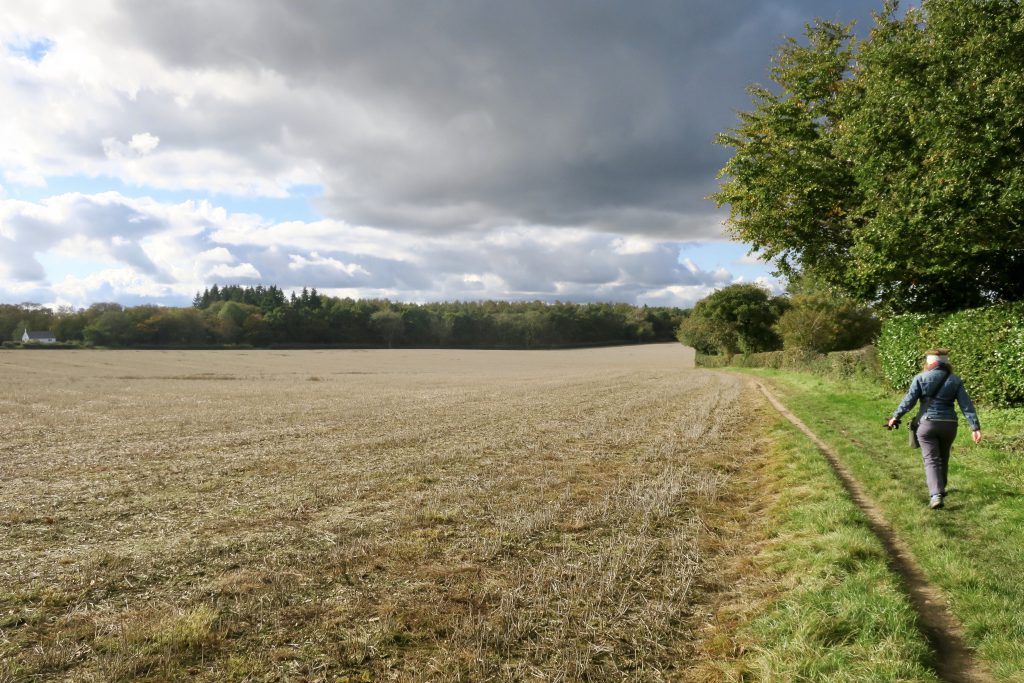
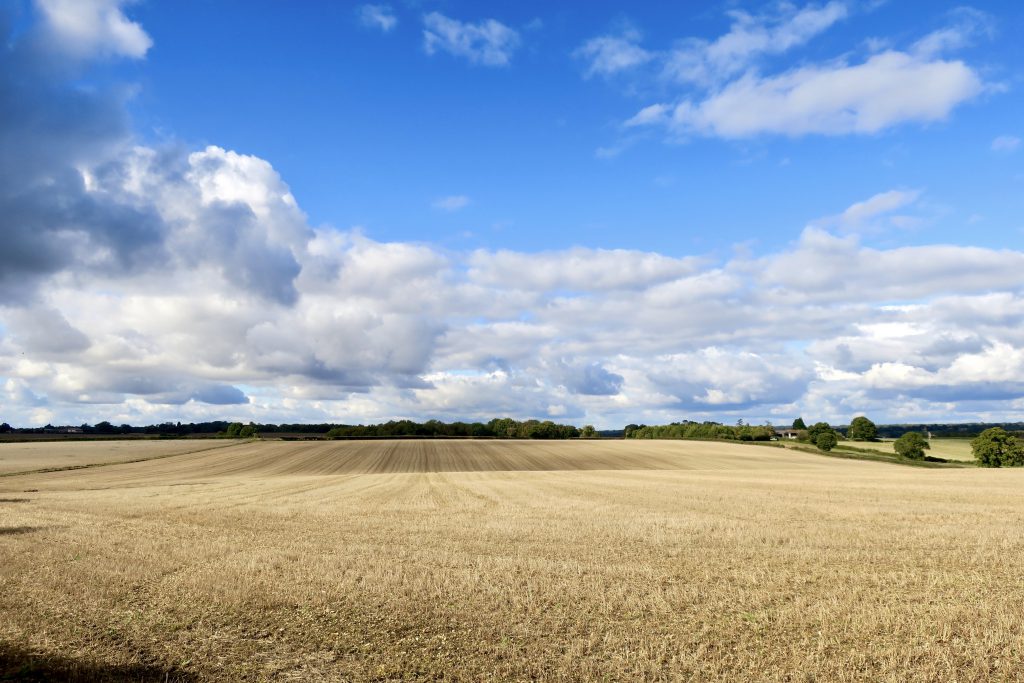
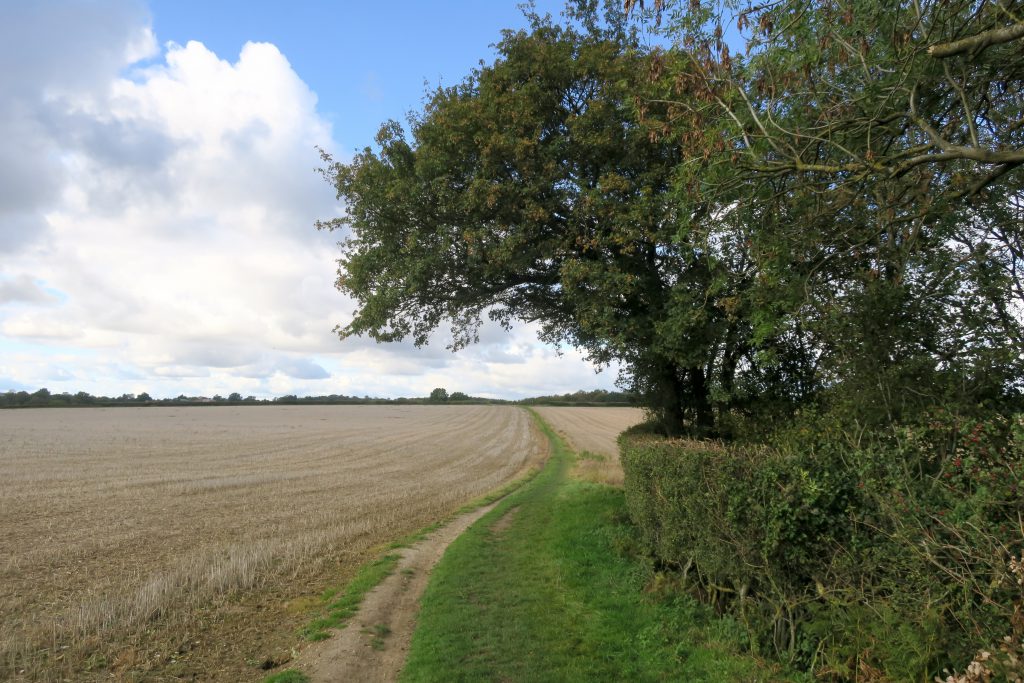
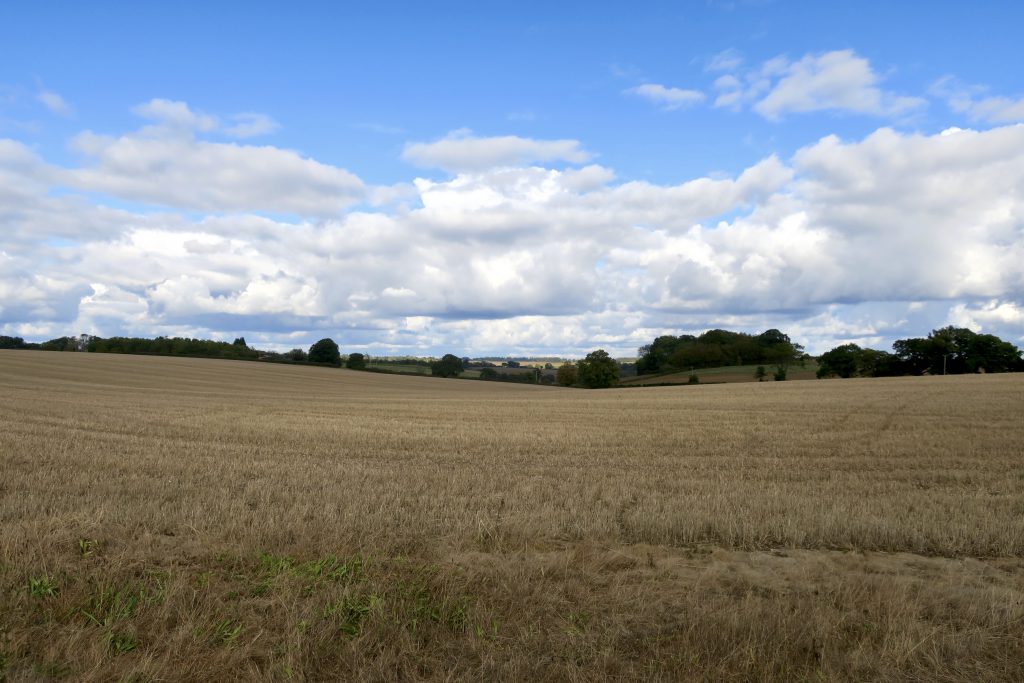
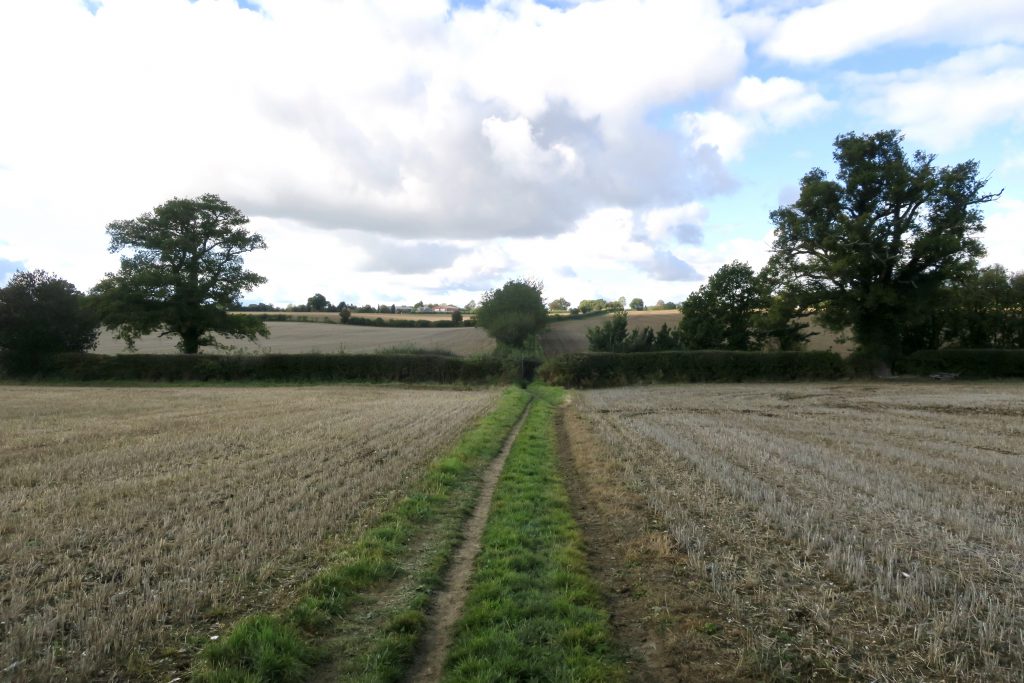
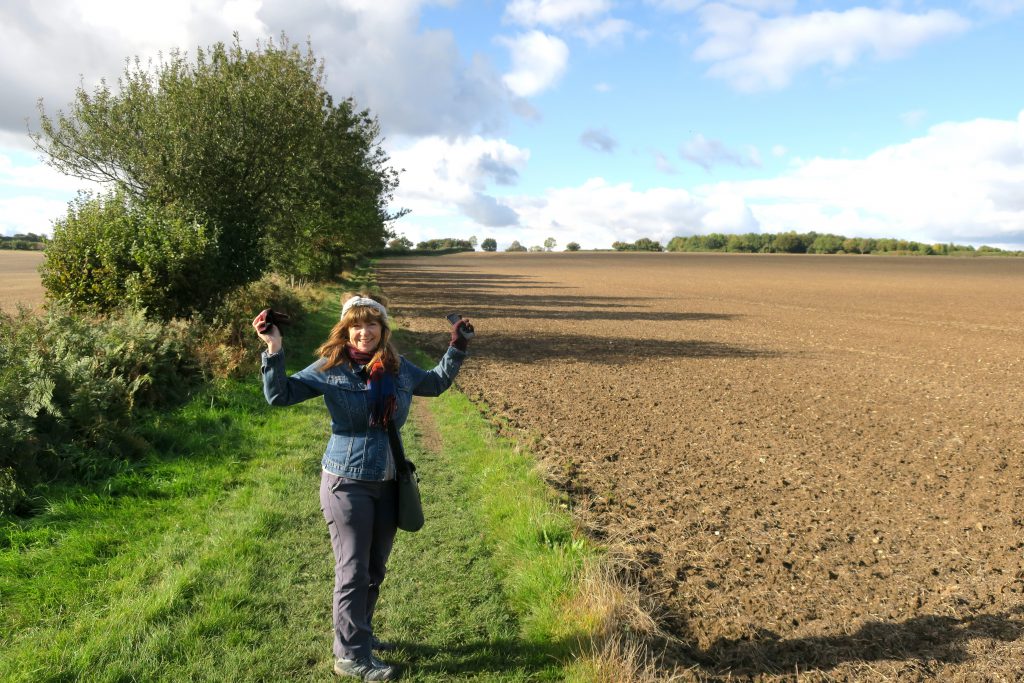
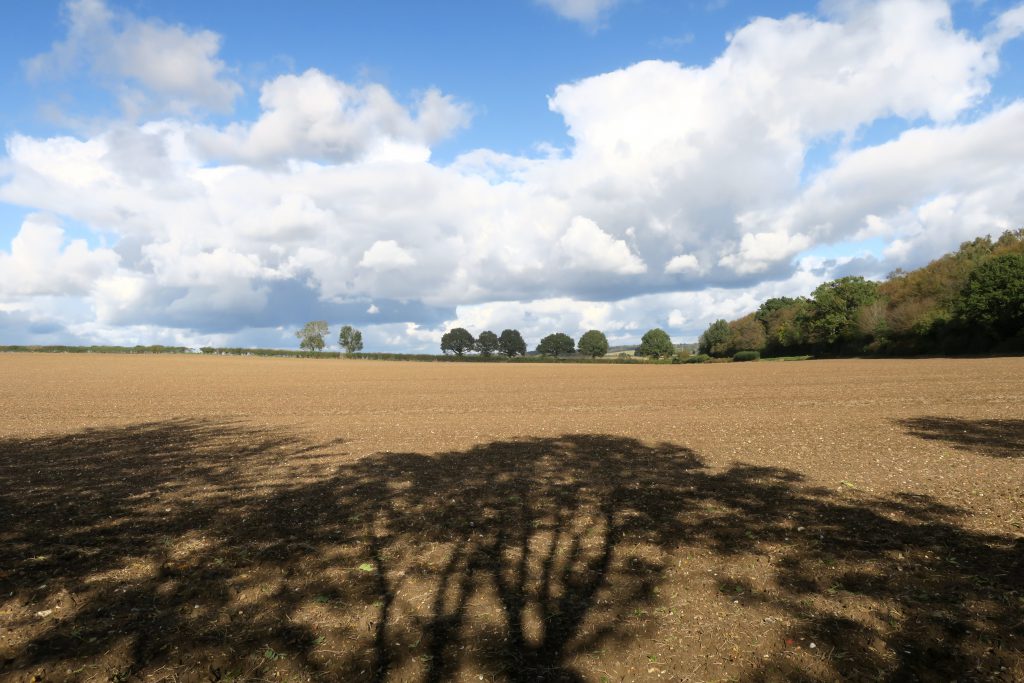
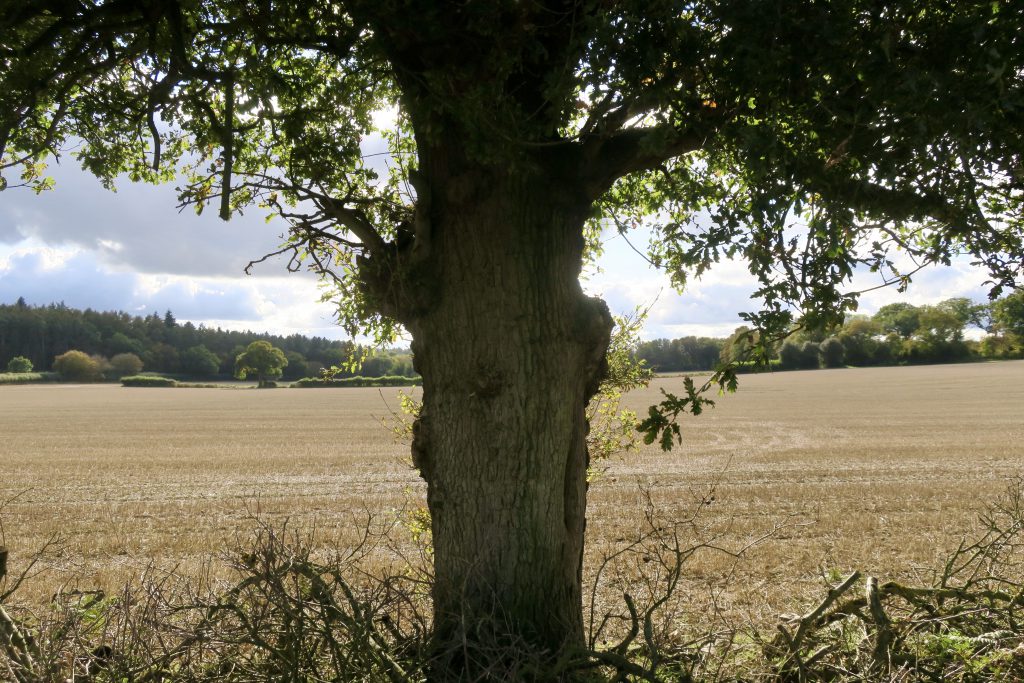
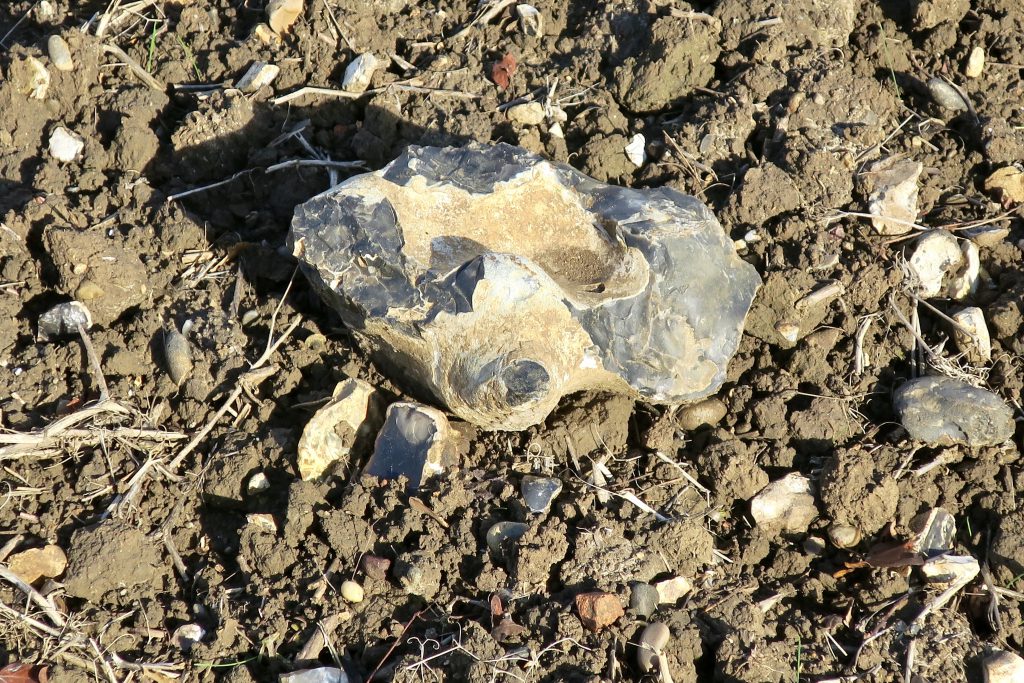
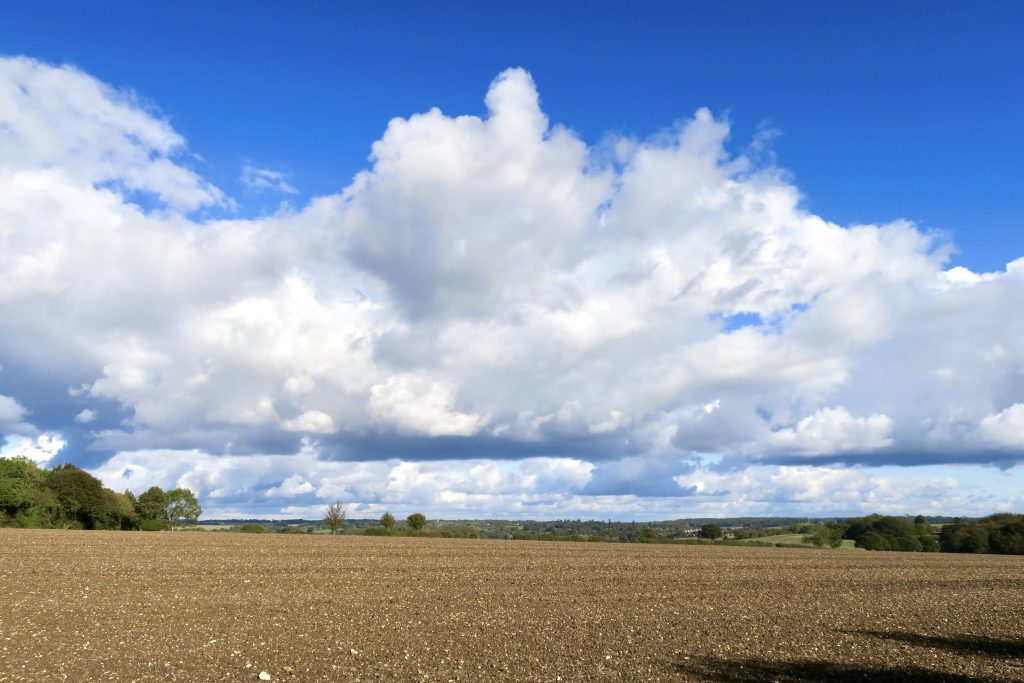
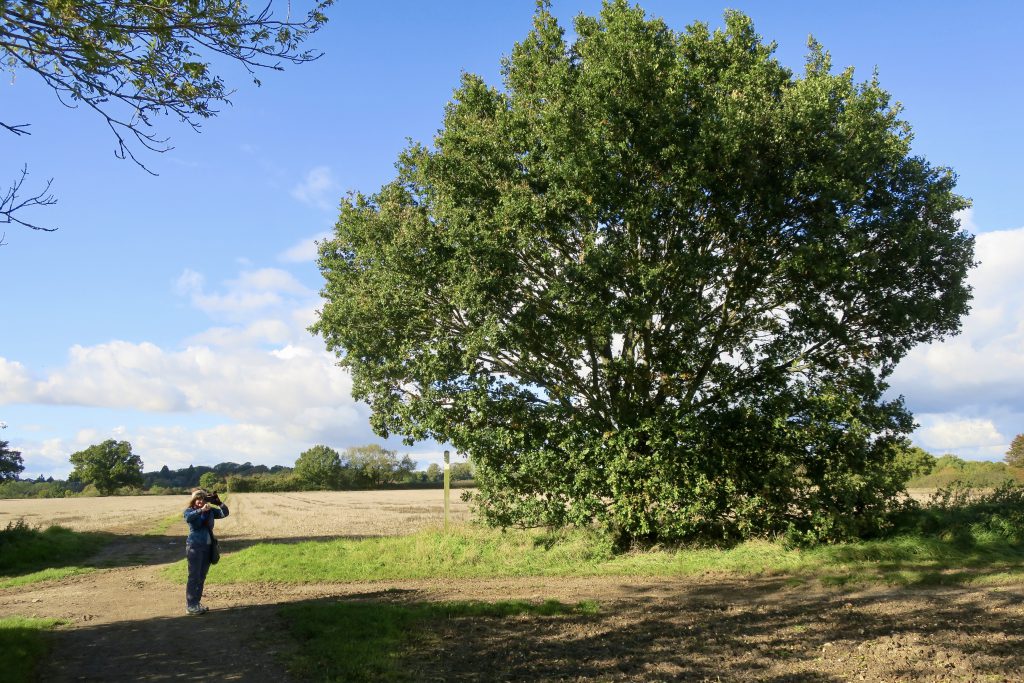
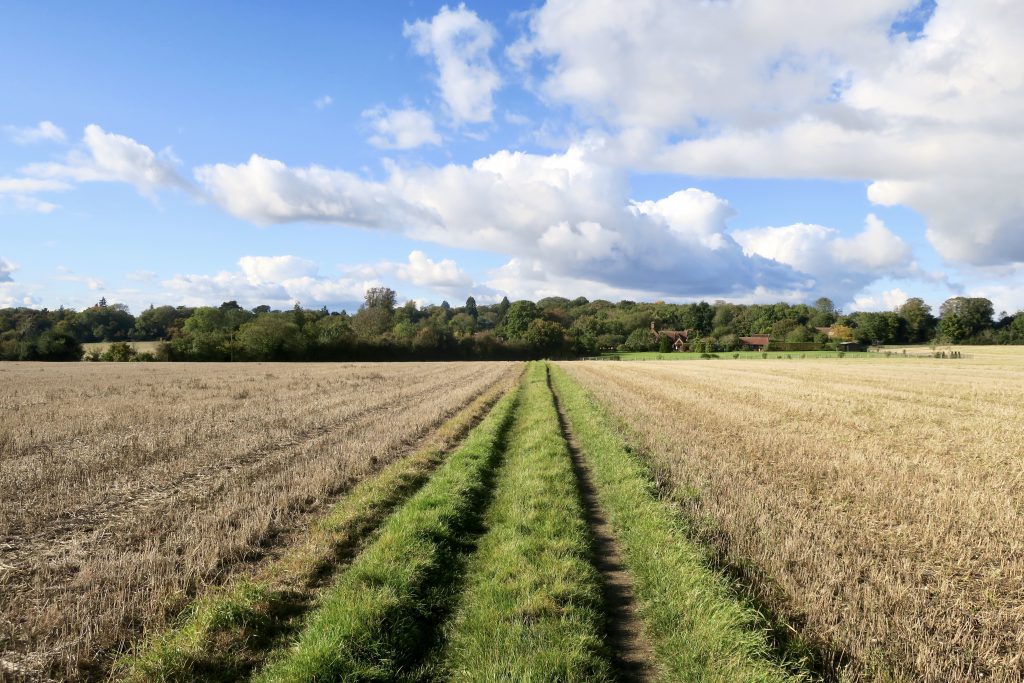
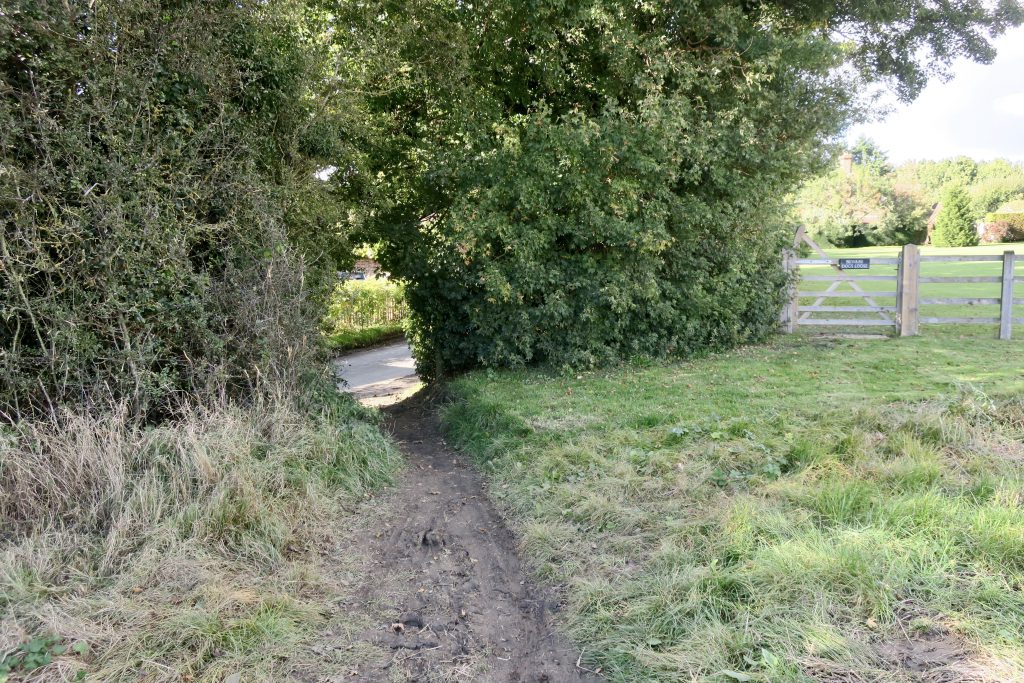
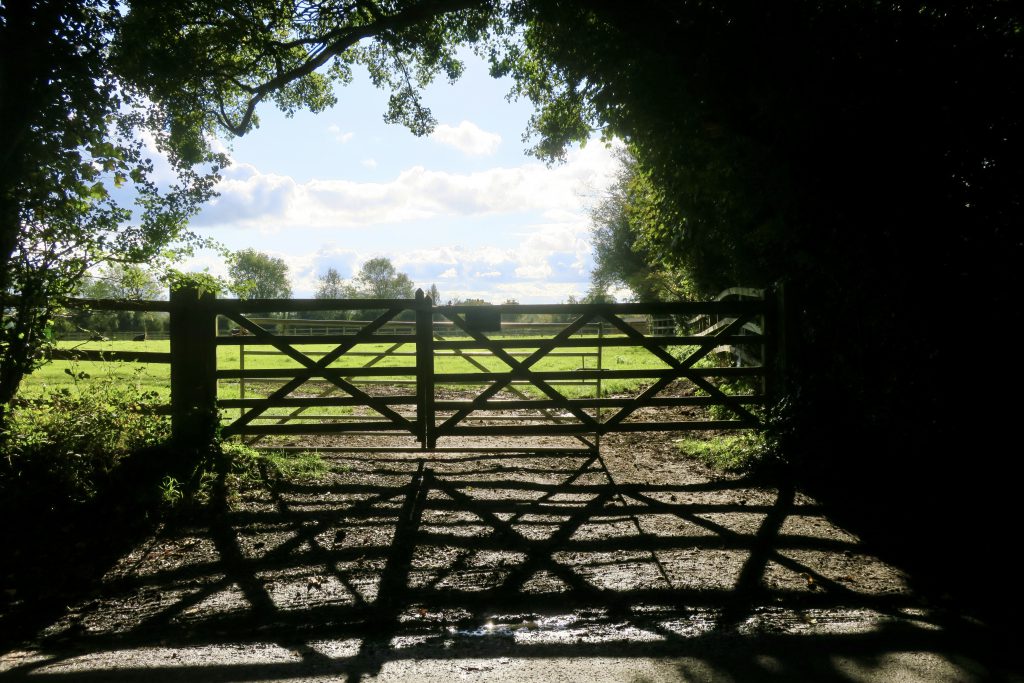
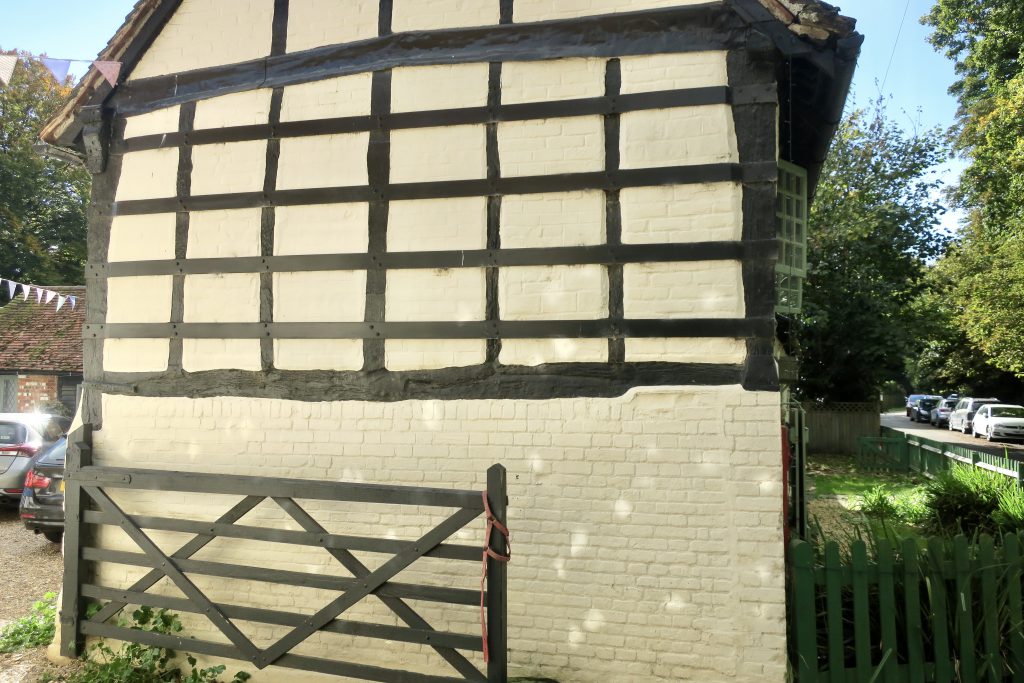
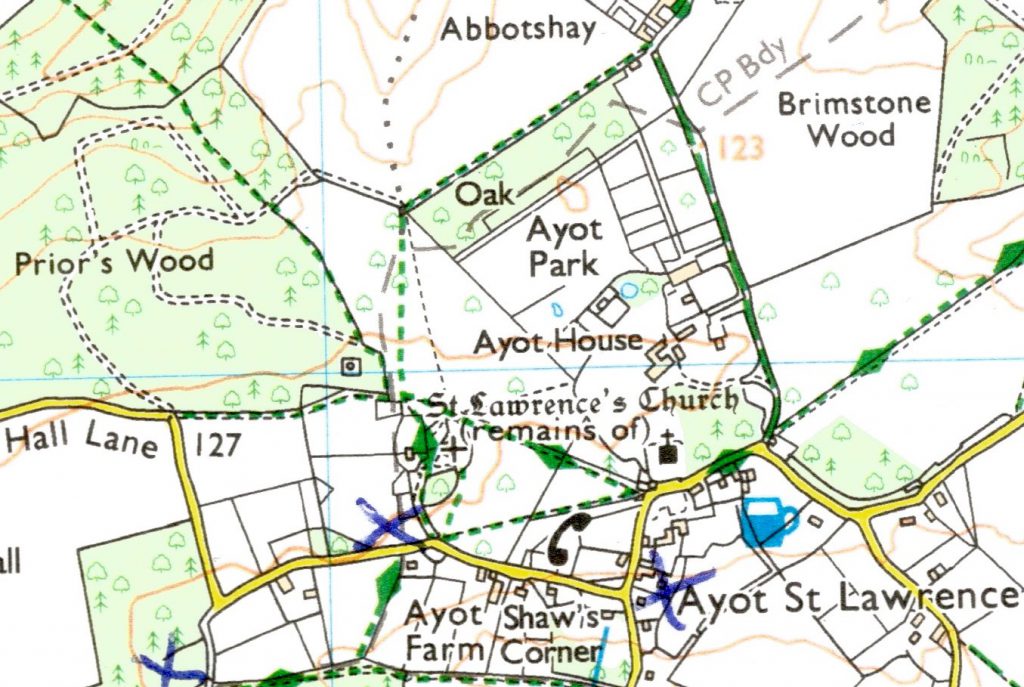
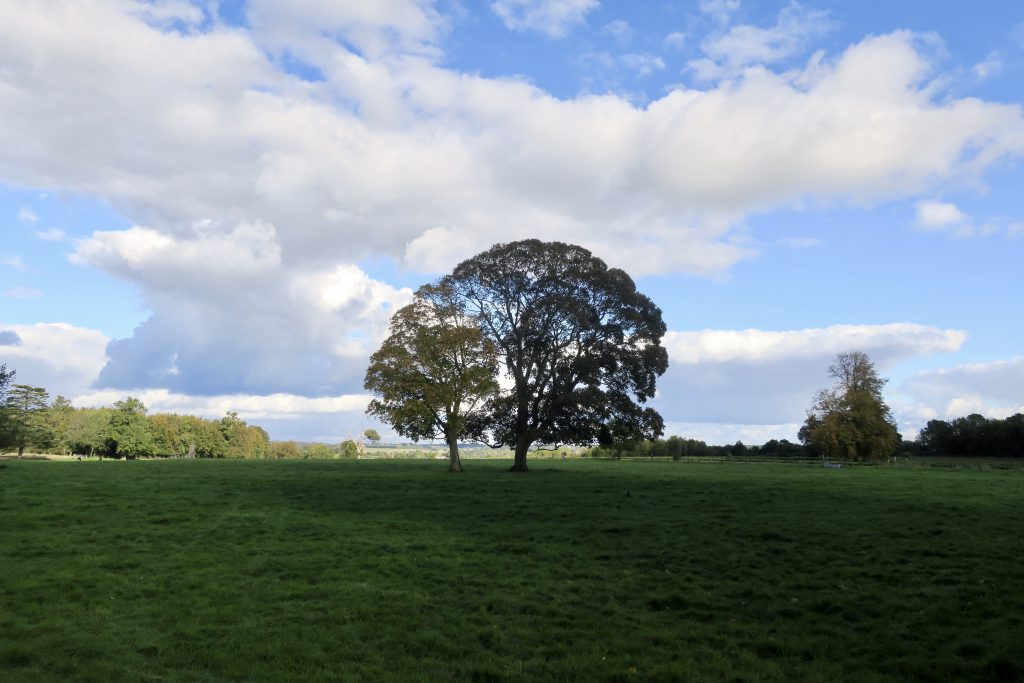
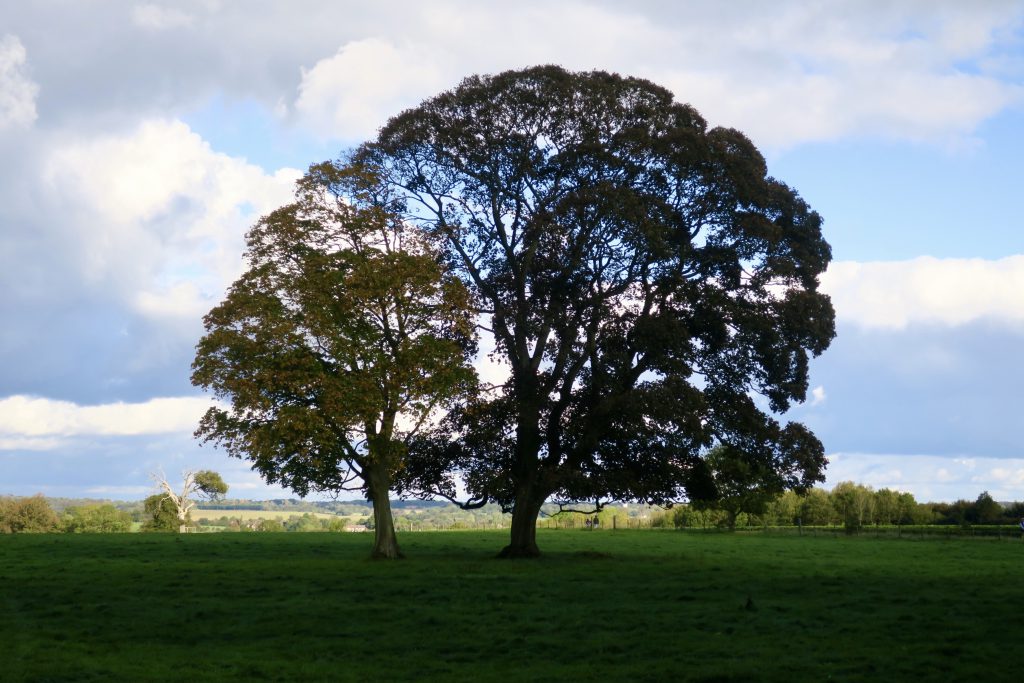
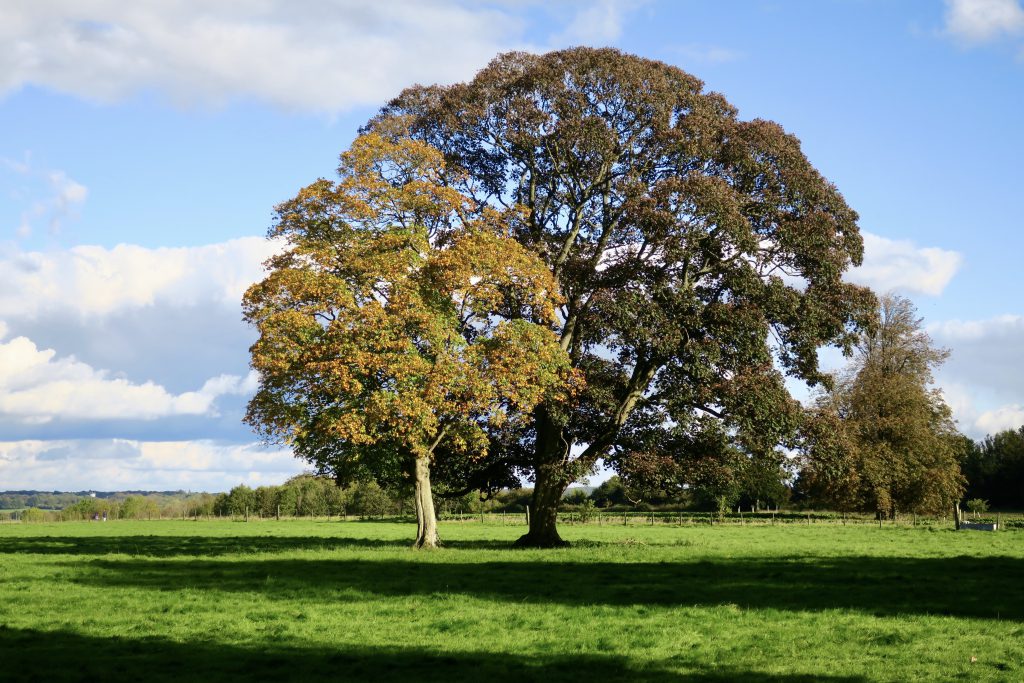
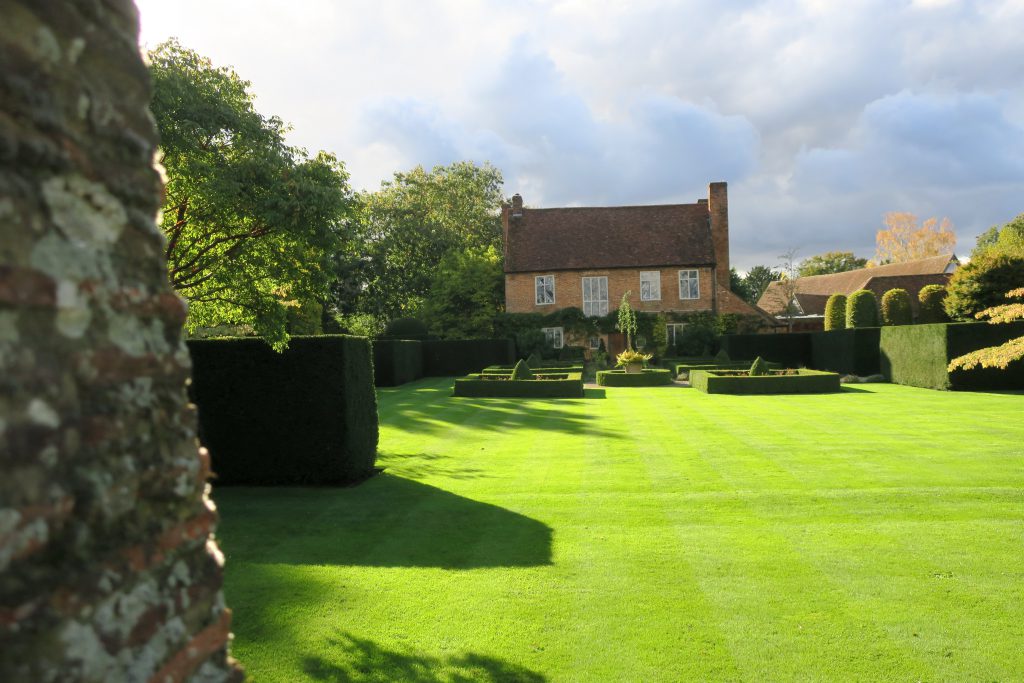
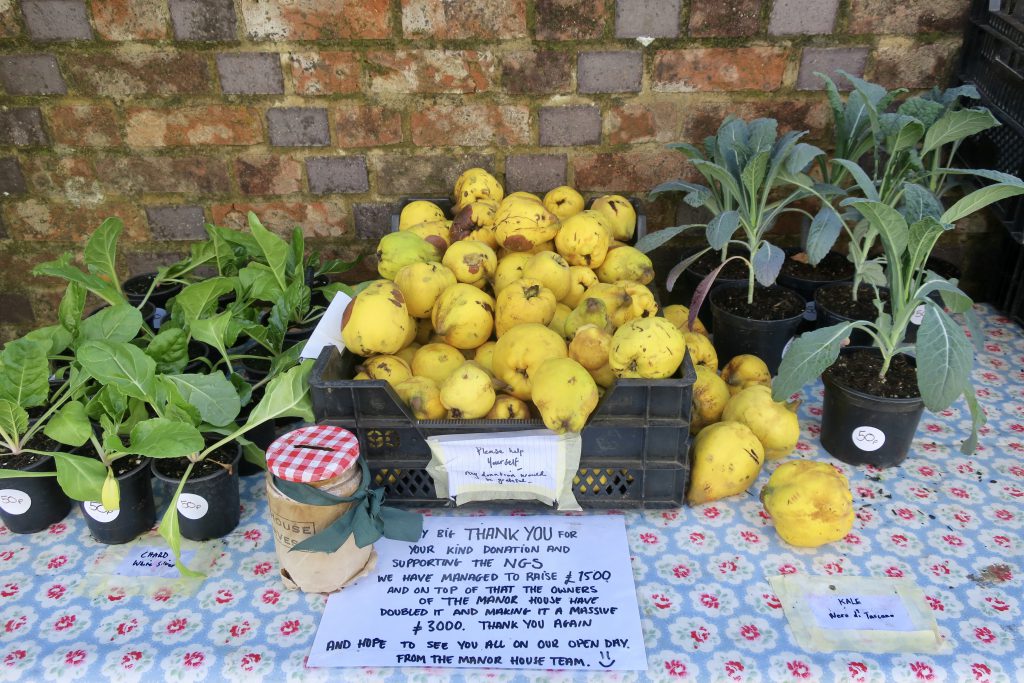
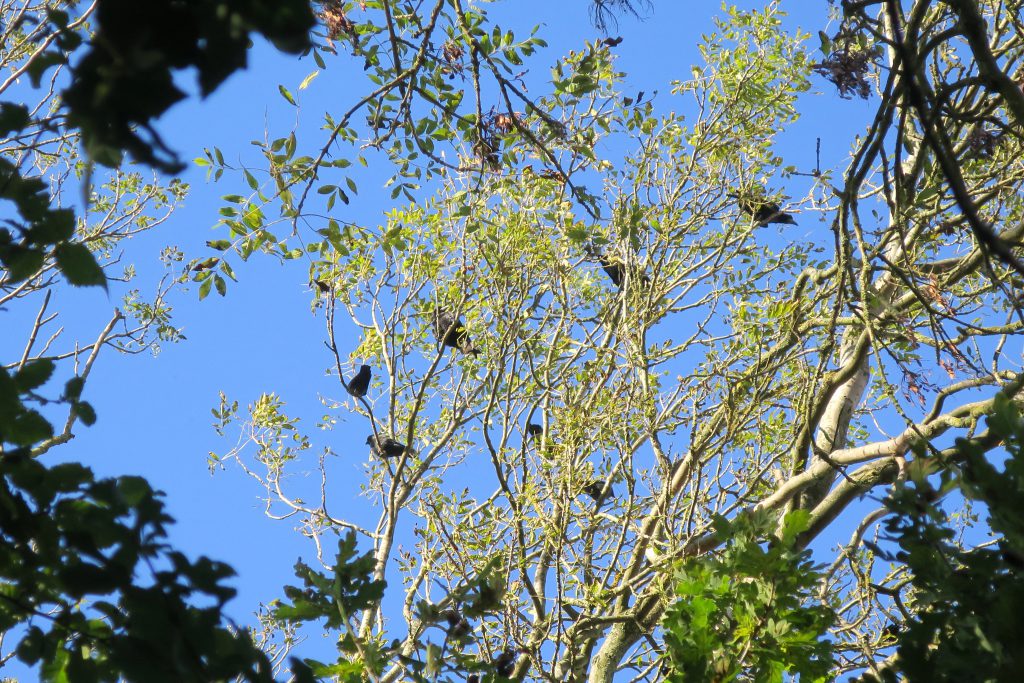
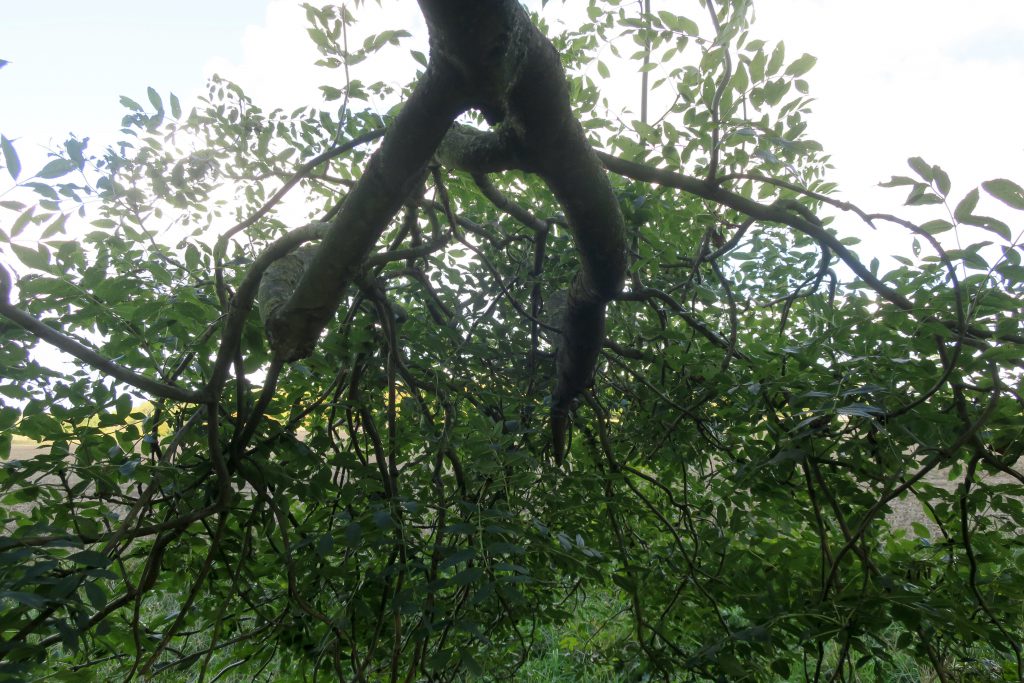
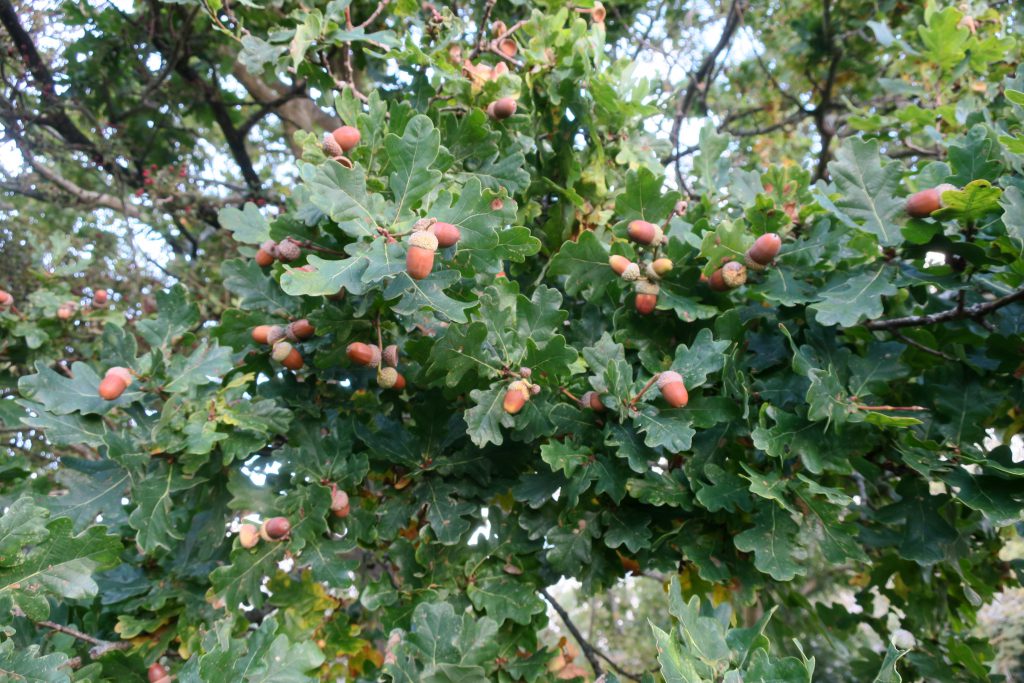
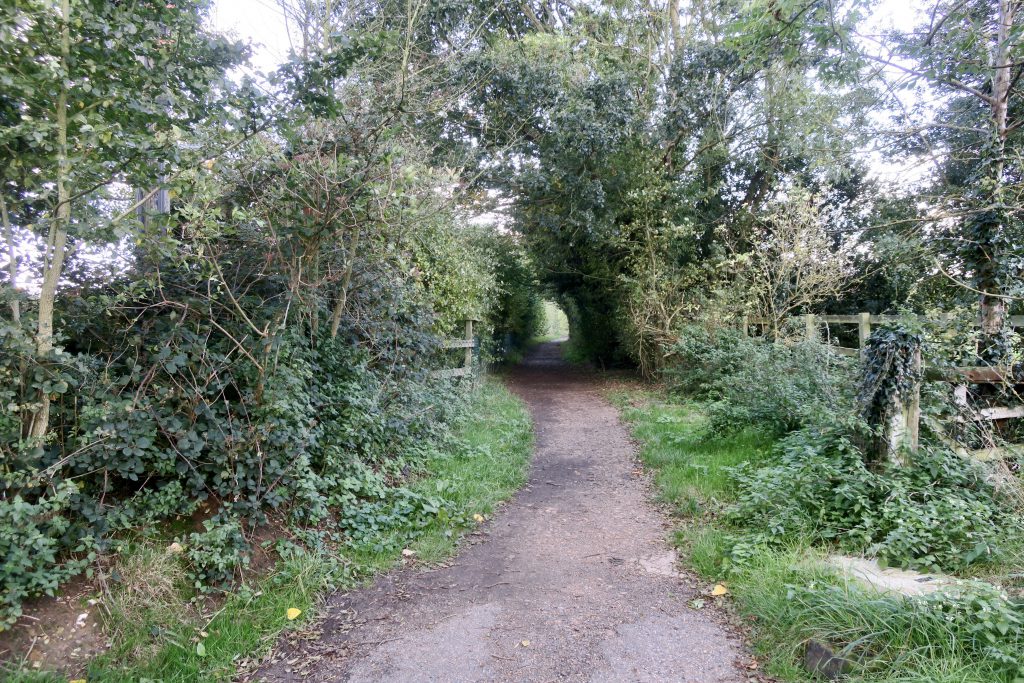
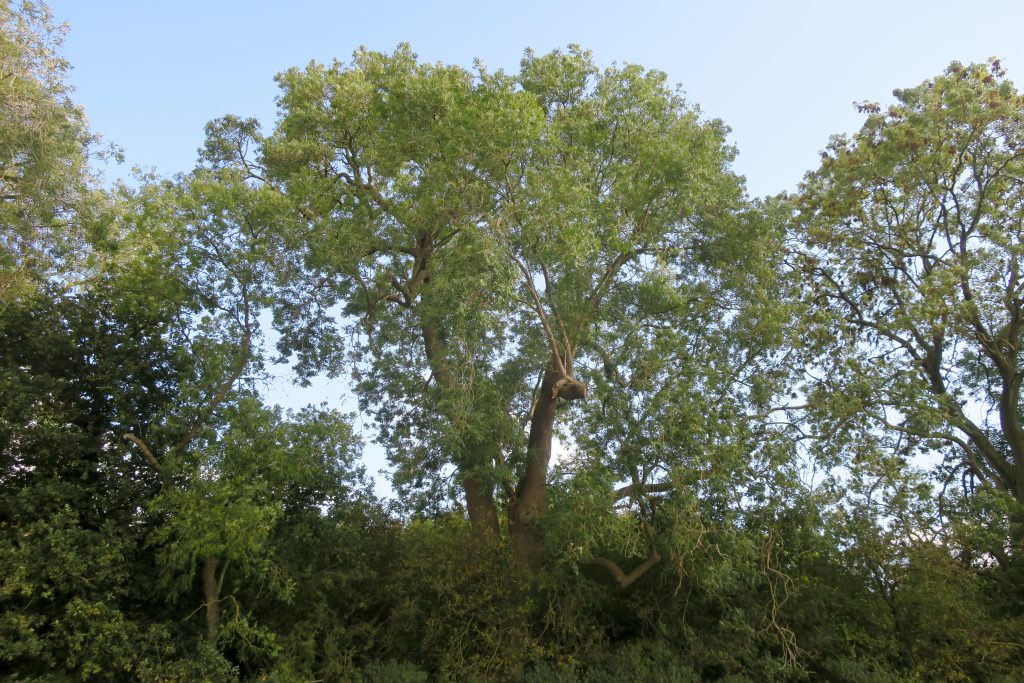
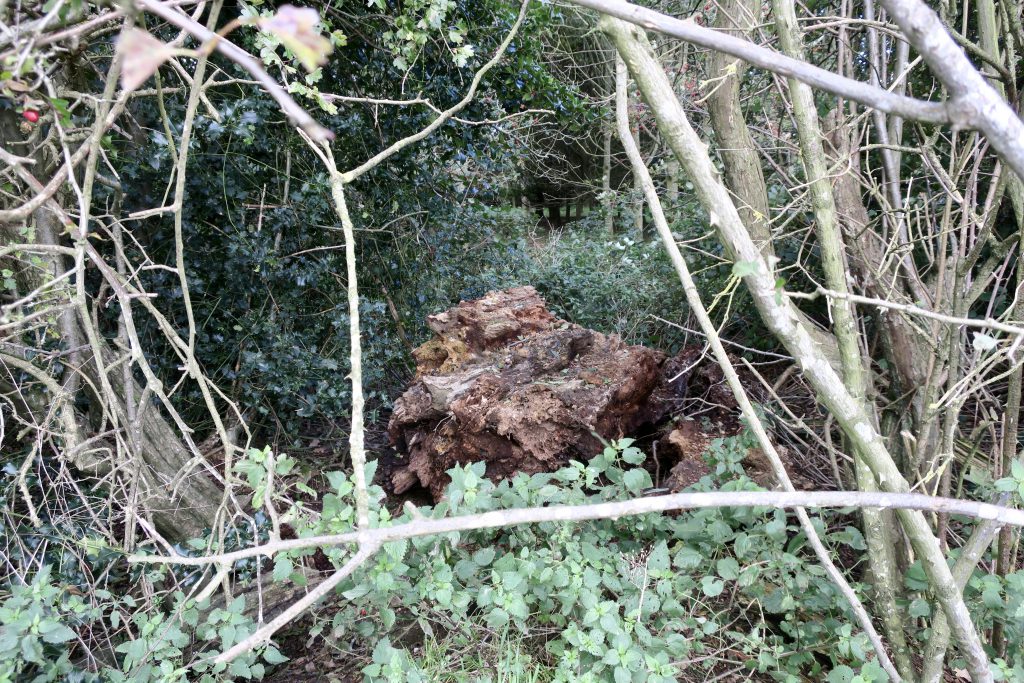
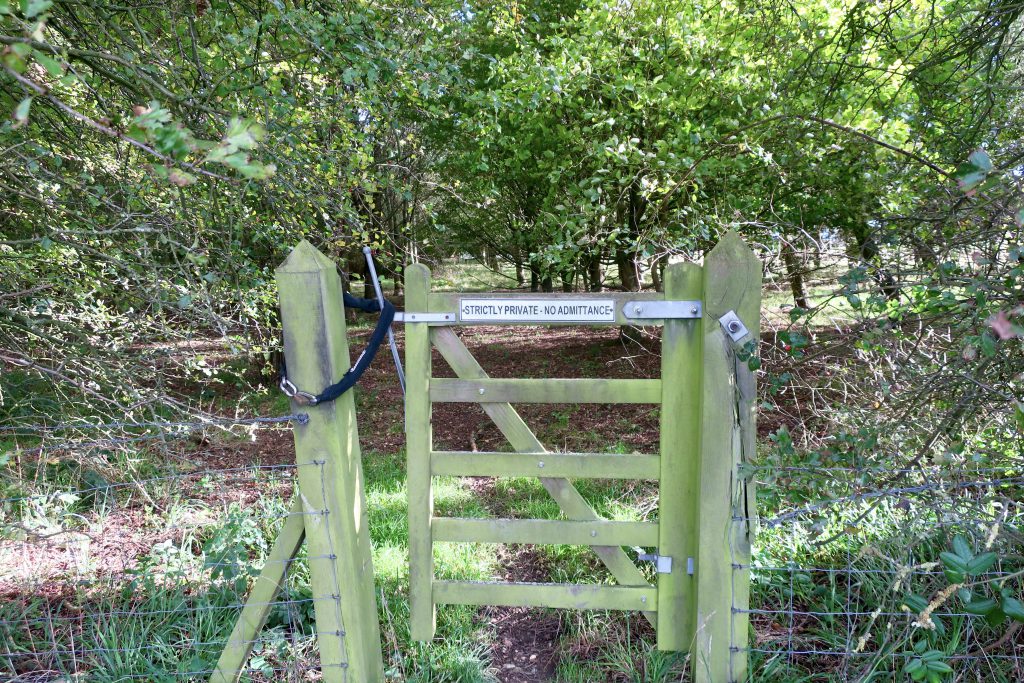
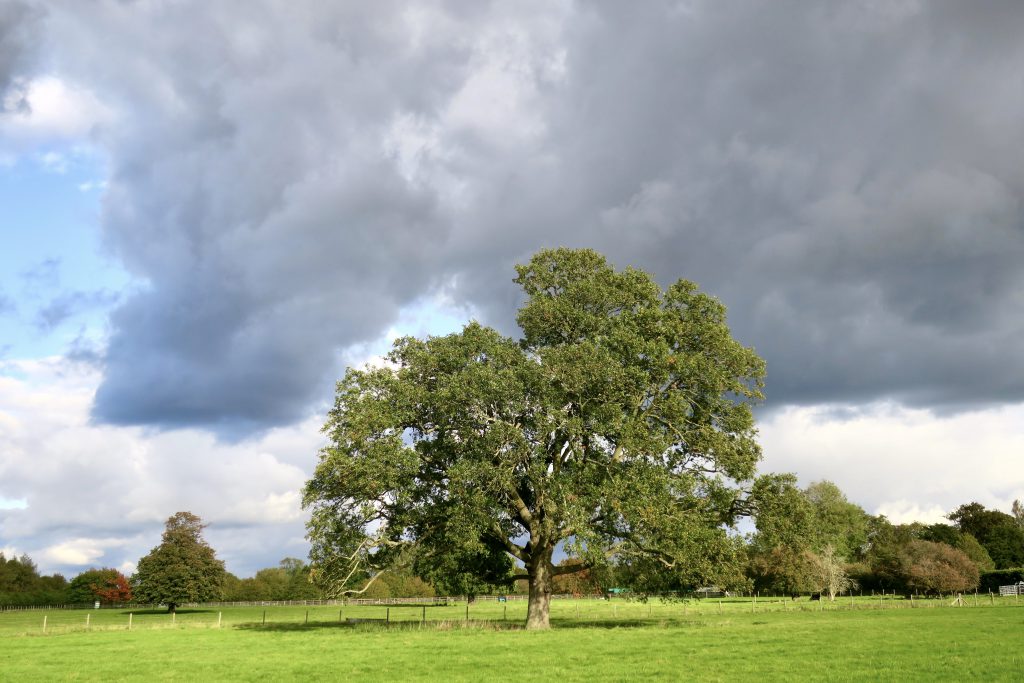
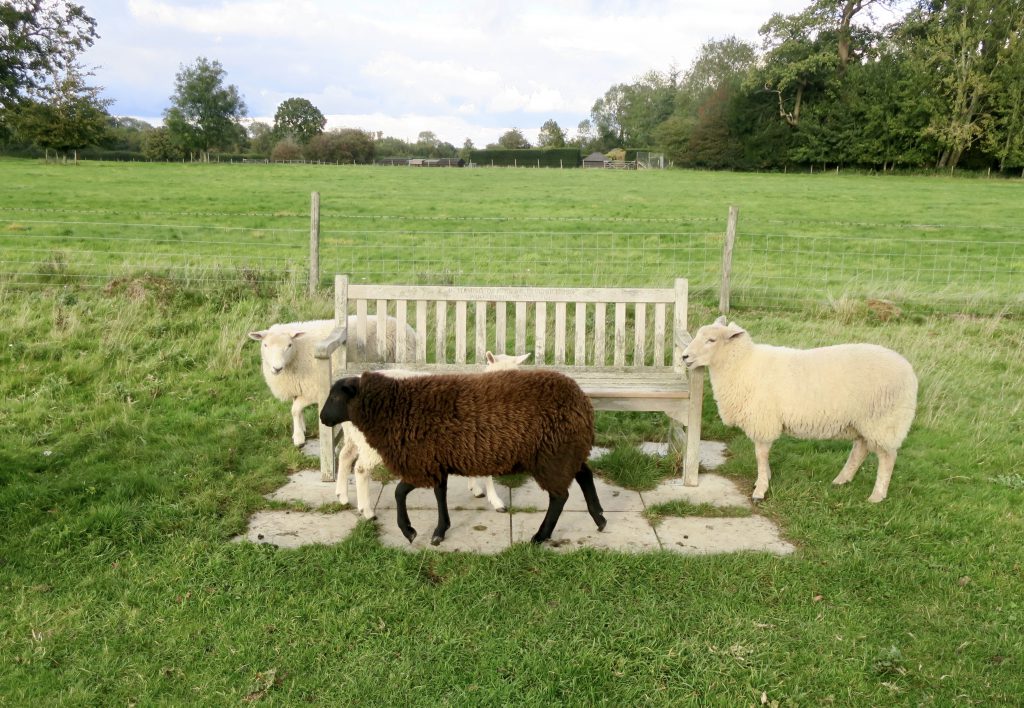
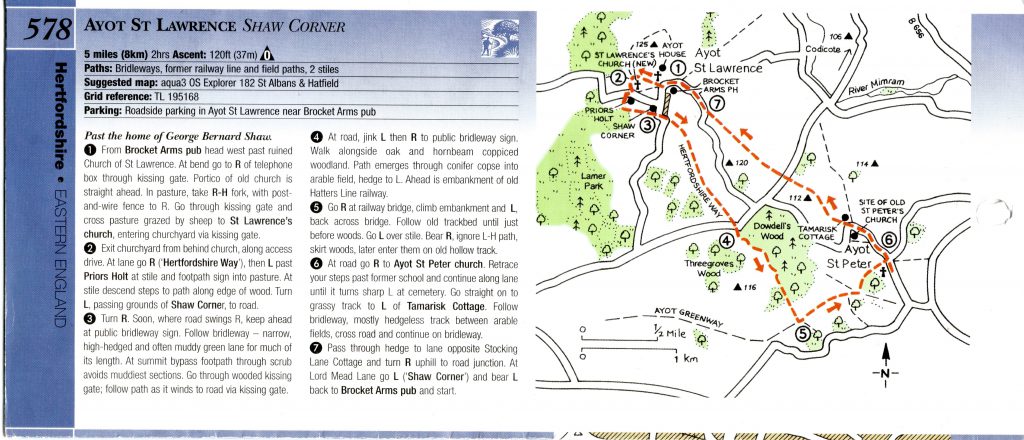
Walking is a melody…
what a wonderful stroll and love the photographs ….